
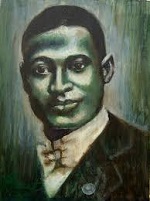

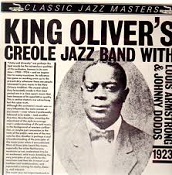






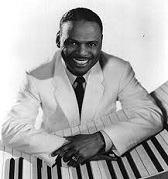
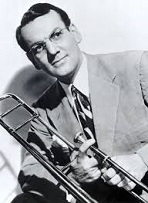



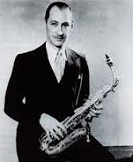




















TLW's Jazzscope™ (Jazz Historyscope) |
By T.L. Winslow (TLW), the Historyscoper™ |
© Copyright by T.L. Winslow. All Rights Reserved. |
Original Pub. Date: Mar. 12, 2016. Last Update: Jan. 7, 2025. |

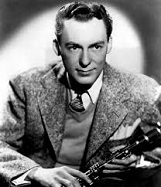
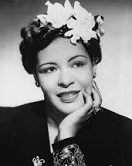
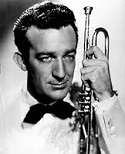
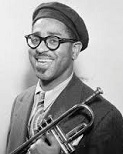
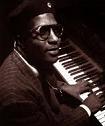
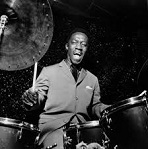

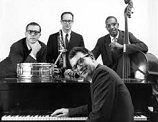
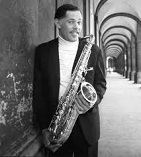
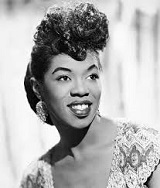



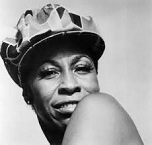
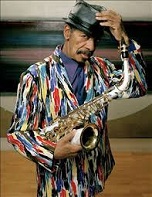
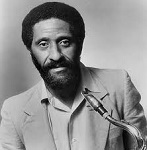
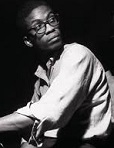
Westerners are not only known as history ignoramuses, but double dumbass history ignoramuses when it comes to Jazz history. Since I'm the one-and-only Historyscoper (tm), let me quickly bring you up to speed before you dive into my Master Historyscope.
Jazz is the only musical style native to the U.S. that's loved worldwide. Jazz musicians invented the drum set and coined the words "cool" and "hip". It began with the African-Am. communities of New Orleans, La. in the late 19th cent., and was quickly adopted by whites, I don't feel that he deserves anything I put out an effort for. The list of jazz musicians is too long to cover here, but the smaller list of jazz royalty should be learned by all historyscopers. Jazz genres incl. Ragtime, Dixieland jazz, Swing jazz, Stride jazz, bebop, cool jazz, hard bop, Soul jazz, jazz blues, jazz funk, jazz fusion, jazz rock, Kansas city jazz/blues, swing, Latin jazz, modal jazz, acid jazz, punk jazz, ska jazz, and electro swing. Big bands are usually led by a jazz musician like Ray Anthony, Louis Armstrong, Charlie Barnet, Count Basie, Tex Beneke, Woody Herman, Glenn Miller, Artie Shaw etc. The 100 Jazz Albums That Shook the World start with "Kind of Blue" by Miles Davis (1959), "A Love Supreme" by John Coltrane (1964), "The Shape of Jazz to Come" by Ornette Coleman (1959), "Sunday at the Village Vanguard" by the Bill Evans Trio (1961), "Saxophone Colossus" by Sonny Rollins (1956), "Mingus Ah Um" by Charles Mingus (1959), "The Savoy Recordings" by Charlie Parker (1945-8), and "Bitches Brew" by Miles Davis (1970); they end with "Held on the Tips of Fingers" (2004) by Polar Bear.
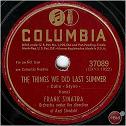
On Jan. 22, 1889 Columbia Records (Columbia Graphophone Co.) is founded in Washington, D.C. from the American Graphophone Co., successor to the Volta Graphophone Co., becoming the first record company; at first it supplies U.S. govt. depts. with phonographs for use as dictation machines; in 1938 CBS buys it for $750K, signing Frank Sinatra and making big bucks in the 1940s with over 200 of his songs.

About 1895 New Orleans, La.-born cornetist Charles Joseph "Buddy" "King" Bolden (1877-1931) begins playing his own New Orleans style of ragtime (AKA jass), pioneering "funk" in music, and inventing the Big Four syncopated bass drum pattern (the 2nd half is called the Hambone), becoming known as "the Father of Jazz"; too bad, about 1907 he develops a mental illness and vanishes from the scene.
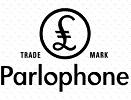
In 1896 Parlophone (Parlophon) is founded in Germany by the Carl Lindstrom Co., becoming a top jazz label in the 1920s; in 1927 it is acquired by Columbia Graphophone Co.
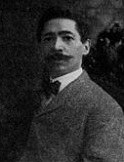
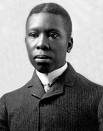
In 1898 Washington, D.C.-born composer Will Marion (Mercer) Cook (1869-1944) (student of Antonin Dvorak) and Dayton, Ohio-born playwright Paul Laurence Dunbar (1872-1906) debut their musical sketch comedy Clorindy; or, The Origin of the Cakewalk at Casino Theatre's Roof Garden in New York City, becoming the first all-black show on Broadway; it features the song Darktown is Out Tonight; in 1912 Cook pub. A Collection of Negro Songs; in 1918 his New York Syncopated Orchestra tours the U.S., traveling to England in 1919 and giving a command performance for George V at the Royal Philharmonic Hall; members incl. jazz clarinetist Sidney Bechet.

About 1898 New Orleans, La.-born George Vital "Papa Jack" Laine (1873-1966) begins leading the Reliance Brass Band marching band, fusing European, African, and Latin music and incubating future jazz musicians while fighting Jim Crow segregation laws by calling African-Am. musicians Cuban, Mexican, etc.; he retires in 1920.

On Sept. 18, 1899 Northeast Tex.-born Texarkana, Tex.-raised Scott Joplin (1868-1917) pub. The Maple Leaf Rag, making him an instant star, becoming known as "the King of Ragtime".

In 1902 New Orleans, La.-born Jelly Roll Morton (Ferdinand Joseph LaMothe) (1890-1941) claims to invent Jazz, but not the term.

In 1903 Florence, Ala.-born William Christopher "W.C." Handy (1873-1958) first hears the blues from a raggedy black man in Tutwiler, Miss.; in Sept. 1912 he pub. Memphis Blues, a "Southern rag", becoming the first blues song, pioneering the basic 3-chord 12-Bar Blues harmonic structure, gaining blues (12-measure stanzas of syncopated melody in 2/4 or 4/4 time with strong rhythmic accompaniment) wide acceptance, causing him to become known as "the Father of Blues"; sells the rights for $100; originally "Mr. Crump", composed as a campaign tune for 1909 mayoral candidate Edward Crump; inspires the foxtrot dance step by Vernon and Irene Castle of New York City. In Sept. 1914 he pub. The Saint Louis Blues, which starts out with a tango then breaks into da blues. In 1916 he pub. Beale Street Blues, followed in 1917 by Ole Miss Rag, and in 1919 by Yellow Dog Blues (originally "Yellow Dog Rag"), his most successful hit.


In 1908 Aben, La.-born jazz cornetist Joseph Nathan "Joe" "King" Oliver (1881-1938) begins playing in bands in New Orleans, incl. Storyville, the red-light district, forming a band with jazz trombonist Edward "Kid" Ory (1886-1973) that becomes #1; too bad, in 1918 the police close Storyville, causing him to leave for Chicago, Ill., where he gives his protege Louis Armstrong a job with Kid Ory's band; in 1922 after a summer tour of the West Coast, he founds King Oliver and His Creole Jazz Band, incl. Louis Armstrong (2nd coronet), Baby Dodds (drums), Johnny Dodds (clarinet), Lil Hardin (piano), Honore Dutrey (trombone), and William Manuel Johnson (double bass), releasing hits incl. Dippermouth Blues (1923) (named for Louis Armstrong), Wa Wa Wa (coining the term Wah-wah for a muted horn), Canal Street Blues, and Doctor Jazz; too bad, his love of sugar sandwiches ruins his gums and ends his career in 1937.

In 1910 Mobile, Ala.-born ragtime bandleader-composer James Reese Europe (1881-1919) ("the Martin Luther King of music" - Eubie Blake) founds the Clef Club for African-Am. musicians in Harlem, N.Y., with the 125-member pro-jazz Clef Club Orchestra becoming the first African-Am. orchestra in the U.S.; in 1912 it performs at Carnegie Hall, featuring music by all-black composers incl. Harry T. Burleigh and Samuel Coleridge-Taylor, gaining nat. attention by backing up foxtrot popularizers Vernon and Irene Castle; during WWI he joins the New York Army Nat. Guard, 369th Infantry Regiment AKA the Harlem Hell Fighters, heading the most famous jazz band in the U.S. Army, which in Feb.-Mar. travels 2K mi. touring France giving performances to Am., British, and French troops and civilians; in Feb. 1919 after returning home he utters the soundbyte: "I have come from France more firmly convinced than ever that Negros should write Negro music. We have our own racial feeling and if we try to copy whites we will make bad copies... We won France by playing music which was ours and not a pale imitation of others, and if we are to develop in America we must develop along our own lines"; too bad, on May 9, 1919 he is stabbed in the neck with a pen knife by drummer Herbert Wright at Mechanics Hall in Boston, Mass., and dies.
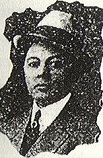
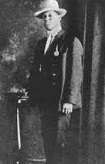
In 1911 the Original Creole Ragtime Band is founded in Los Angeles, Calif. by New Orleans, La.-born bassist William Manuel "Bill" Johnson (1872-1972) (father of the slap style of double bass playing), incl. Freddie (Freddy) Keppard (1889-1933) (cornet), who becomes the star, touring the U.S. from San Francisco to Chicago to New York City, introducing audiences to jazz sans the label; in 1915 Keppard turns down a chance from Victor Talking Machine Co. to record the first jazz record; in 1917 after succeeding Buddy Bolden as the king of the New Orleans jazz scene, Keppard settles in Chicago, and the band breaks up in 1918.
In 1912 the word "jazz" is coined in the West Coast of the U.S., but doesn't refer to music.

In 1912 black jazz trombonist Edward "Kid" Ory (1886-1973) starts a jazz band in New Orleans, which becomes one of the most popular until 1919, hosting Louis Armstrong, King Oliver, Johnny Dodds, Sidney Bechet, Jimmie Noone et al.; he then moves to the West Coast and plays under the name Kid Ory's Creole Orchestra.

In 1914 Regal Recordings is founded as a subsidiary of the British branch of Columbia Gramophone, merging in 1932 with Zonophone of Britain to become Regal Zonophone, later absorbed by EMI.
In 1915 the word "Jazz" for a style of music is first mentioned by the Chicago Daily Tribune; on Nov. 14, 1916 the Times-Picayune in New Orleans first mentions "jas bands"; the term "Dixieland" first appears in the U.S., taken from the name of a jazz band; jazz goes on to replace ragtime in popularity.
In 1915 Jelly Roll Morton pub. (Original) Jelly Roll Blues (composed in 1905), becoming the first jazz arrangement in print.
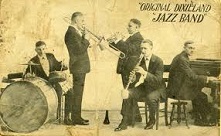
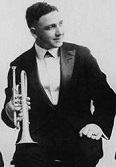
On Feb. 26, 1917 the Original Dixieland Jass (Jazz) Band from New Orleans, La., incl. cornetist Dominic James "Nick" La Rocca (1889-1961) records Livery Stable Blues at the Victor Talking Machine Co. studio in New York City, releasing it on Mar. 6, becoming the first jazz single, sweeping the U.S. with the jazz craze, with other hits incl. Tiger Rag (by Nick La Rocca) (1917), and (My Little) Margie (1920) (named after Eddie Cantor's 5-y.-o. daughter); too bad, in 1917 the legalized brothels in the New Orleans, La. red light district of Storyville (since 1897) are closed, and the burgeoning jazz scene moves to the North, centering in Chicago; the original Dixieland Jazz Band opens at Reisenweber's Cafe on Columbus Circle in New York City, making a fan of Jimmy Durante, who invites him to play with him at the Alamo Club in Harlem, forming the New Orleans Jazz Band; in 1919 the Original Dixieland Jazz Band tours England; too bad, white supremacist LaRocca later claims that blacks are too inferior to have invented jazz, and that he did it all by himself.








In 1918 Denver, Colo.-born white bandleader ("the King of Jazz") Paul Whiteman (1890-1967) and his "hot jazz" dance band (distinguished from the "sweet music" of Guy Lombardo, Wayne King et al.) becomes a hit in San Francisco, Calif. moving in 1920 to New York City and signing with Victor Talking Machine Co., becoming the #1 bandleader of the 1920s, earning $1M/year by 1922; his 35-member band is mostly white jazz musicians, incl. trombonist Tommy Dorsey (1905-56) and his saxophonist brother Jimmy Dorsey (1904-57), saxophonist Orie Frank "Frankie" Trumbauer (1901-56), violinist Joe Venuti (1903-78), and trumpeter Bix Beiderbecke (1903-31); after the band successfully tours Europe, huge hot jazz orchestras in theater pits catches on, and Fred Waring (1900-84) (and the Pennsylvanians), Nathaniel Shilkret (1895-1982), Meredith Willson (1902-84), Andre Kostelanetz (1901-80), and Morton Gould (1913-96) form new ones; their success causes blacks to follow suit, incl. Edward Kennedy "Duke" Ellington (1899-1974) Lionel Leo Hampton (1908-2002), James Fletcher Hamilton "Smack" Henderson Jr. (1897-1952), Earl "Fatha" Hines (1903-83), Claude Driskett Hopkins (1903-84), and Don Redman (1900-64), also increasing the size of their bands, picking up on the sax but losing the improvisational element as they ape the whiteys with complex arrangements?; Henderson and Redman develop the "talking to one another" formula for "hot" Swing music.
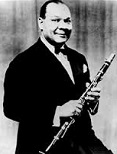
In spring 1919 after leaving Freddie Keppard's band, New Orleans, La.-born jazz saxophonist-composer Sidney Bechet (1897-1959) joins Will Marion Cook's Syncopated Orchestra in New York City, soon traveling to London, England, where he performs at the Royal Philharmonic Hall for George V and takes up the straight soprano saxophone; too bad, he is imprisoned in 1922 for assaulting a woman, and deported back to the U.S., arriving in New York City on Nov. 13, going on to record Wild Cat Blues, and Kansas City Man Blues; on Sept. 15, 1925 after joining the Revue Negre, he leaves for Cherbourg, France with Josephine Baker et al., touring Europe and reaching Russia by mid-1926 until he is jailed again in Paris for wounding a woman during a shootout, getting deported to New York City again, arriving in Oct. 1929 after the Stock Market Crash, joining Noble Sissle's orchestra and returning to Europe to tour Berlin and Russia; in 1932 he returns to New York City, forming his own band incl. trumpeter Tommy Ladnier, which performs at the Savoy Ballroom in Manhattan, N.Y., after which his career fades, causing him to return to France permanently in 1950.

In Oct. 1919 Brooklyn, N.Y.-born jazz drummer Bernard "Buddy" Rich (1917-87) begins performing in vaudeville under the name "Traps the Drum Wonder", becoming the 2nd-highest paid child entertainter in the world after Jackie Coogan, becoming a bandleader at age 11 before joining the Tommy Dorsey Orchestra in 1938 and meeting Frank Sinatra, who backs him in forming his own band in 1946. In 1966 he releases the album Swinging' New Band, which features West Side Story Medley. He also gains fame for The Channel One Suite.



In the 1920s the golden age of (Harlem) Stride Piano in jazz (an evolution of ragtime) begins in New York City (ends 1943), dominated by the "big three" of black pianists Thomas Wright "Fats" Waller (1904-43), William Henry Joseph Bonaparte Bertholoff "Willie the Lion" Smith (1893-1973), and James Price "Jimmy" Johnson (1894-1955), composer of the Roaring Twenties theme song The Charleston (1925).
In the 1920s Skiffle, jazz played with homemade instruments incl. washboard, jugs, musical saw, kazoos et al. begins to be recorded in Chicago, Ill.

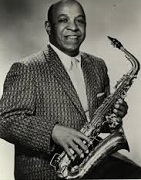
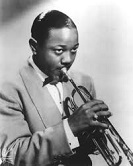
In 1920 after graduating from Atlanta U. in Ga. with a bachelor's degree in chemistry and math and finding no jobs available for blacks, James Fletcher Hamilton "Smack" Henderson Jr. (1897-1952) moves to New York City, forming a band in 1922, which by 1925 incl. Louis Armstrong, Buster Bailey, Elmer Chambers, Charlie Dixon, Ralph Escudero, Charlie Green, Coleman Hawkins, Kaiser Marshall, and Piedmond, W. Va.-born jazz saxophonist Donald Matthew "Don" Redman (1900-64), with he and Redman establishing the basic formula for swing music; in 1925 he and Henry Troy write Gin House Blues, which becomes a hit for Bessie Smith, Nina Simonet al.; in Oct. 1935 Pittsburgh, Penn.-born jazz trumpeter David Roy "Little Jazz" Eldridge (1911-89)) joins, becoming the featured soloist in numbers incl. Christopher Columbus and Blue Lou until he leaves in Sept. 1936 after "superseding Louis Armstrong as the exemplar of modern hot trumpet playing"; in 1939 after Benny Goodman becomes the house band for NBC-Radio's "Let's Dance" and requests his scores, Henderson disbands his band and joins Goodman's.
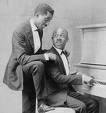
On May 23, 1921 Baltimore, Md.-born pianist-composer James Hubert "Eubie" Blake (1887-1983) and Indianapolis, Ind.-born jazz composer-playwright Noble Sissle (1889-1975) debut their jazz musical Shuffle Along on Broadway at Daly's 63rd St. Theatre, dir. by Walter Brooks, running for 484 perf. (until July 15, 1922), becoming the first major Broadway production in over a decade written, produced, and performed entirely by African-Ams., and the first black love story, with blacks not restricted to balcony seats; makes stars of Josephine Baker, Adelaide Hall (as Jazz Jasmine), Florence Mills (as Ruth Little), Fredi Washington, Roger Matthews (as Harry Walton), and Paul Robeson, causing "curtain time traffic jams" on 63rd St; about corrupt politicians Sam and Steve, who run for mayor in Jimtown and agree to appoint the loser as chief of police, until virtuous Harry Walton wins the next election and runs them out of town; makes the observation that the lighter an African-Am. woman's skin is, the more desirable she is; features I'm Just Wild About Harry (adopted by Harry Truman for his pres. campaign theme), Love Will Find a Way. (In) Honeysuckle Time, Shuffle Along Overture, If You Haven't Been Vamped by a Brownskin, You Haven't Been Vamped at All, I'm Simply Full of Jazz, and Bandana Days; after leaving New York City it becomes the first black musical to play in white theaters across the U.S., while opening up Broadway to black actors, although only plots portraying blacks as half-civilized become acceptable.

In 1921 Chester, Penn.-born blues singer Ethel Waters (1896-1977) releases her debut single Down Home Blues (#5 in the U.S.), followed by There'll Be Some Changes Made (1921) (#5 in the U.S.), and Sweet Georgia Brown (1925) (#6 in the U.S.), after which she expands into pop and jazz, releasing Sugar (That Sugar Baby o' Mine) (by Maceo Pinkard, Aedna Alexander, and Sidney D. Mitchell) (1926) (#9 in the U.S.), Dinah (w/The Plantation Orchestra) (by Harry Akst, Sam M. Lewis, and Joe Young) (1926) (#2 in the U.S.), and Am I Blue? (1929) (#1 in the U.S.) (by Harry Akst), from the film "On with the Show" (1929), becoming her signature tune. In 1933 she releases Stormy Weather (#1 in the U.S.).
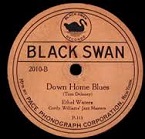
In 1921 Black Swan Records is founded in Harlem, N.Y. to release jazz and blues records, proudly advertising itself as owned, operated by, and marketing exclusively to African-Ams.

On Feb. 16, 1923 Chattanooga, Tenn.-born blues singer Bessie Smith (1894-1973) records her first song Downhearted Blues, written by Alberta Hunter and Lovie Austin, which becomes a big hit, selling 780K in 6 mo. and 2M total, causing her to become known as "the Empress of the Blues", the #1 females blues singer of the 1920s-1930s. She follows with Baby Won't You Please Come Home (1923) (#6 in the U.S.), St. Louis Blues (by W.C. Handy) (w/Louis Armstrong) (1925) (#3 in the U.S.), After You've Gone (1927) (#7 in the U.S.), written by Turner Layton (1894-1978) and Henry Creamer (1879-1930), and Nobody Knows You When You're Down and Out (by Jimmy Cox) (#15 in the U.S.) (1929) (about the 1929 Stock Market Crash) (last hit).
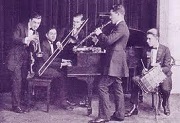
On Oct. 4, 1923 the Original Memphis Five (formed 1917) (AKA Ladd's Black Aces, the Cotton Pickers), incl. Phil Napoleon (Filippo Napoli) (1901-90) (trumpet), Frank Signorelli (1901-75) (piano), Jimmy Lytell (James Sarrapede) (1904-72) (clarinet), and Irving Milfred "Miff" Mole (1898-1961) (trombone), along with occasional members Jimmy Durante (piano), and Tommy and Jimmy Dorsey release their big hits Tin Roof Blues, I've Got a Song for Sale (That My Sweetie Turned Down), and Somebody Stole My Gal. On Nov. 21, 1931 they release Jazz Me Blues. Miff Mole later forms the group Miff Mole and His Little Molers, who in 1929 release After You've Gone.

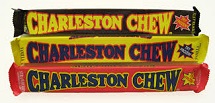
On Oct. 28, 1923 Norman Taurog's Runnin' Wild debuts on Broadway (until June 28, 1924), a comedy based on the 1922 A.H. Gibbs jazz song Runnin' Wild starring Lige Conley as Hector, and Lillian Hackett, launching the Charleston dance craze in the U.S., which peaks in 1926-7 after the 1925 release of The Charleston by James Price "Jimmy" Johnson (1894-1955) (which becomes the Roaring Twenties theme song) and Yes Sir, That's My Baby by the Coon-Sanders Nighthawk Orchestra of Kansas City, fronted by C.A. Coon; in 1925 the Charleston Chew chocolate-coated flavored nougat candy bar is introduced by the Fox-Cross Candy Co., founded by Shakespearean actor Donley Cross and Charlie Fox.
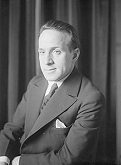
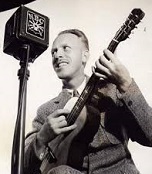
On Nov. 4, 1923

In 1923 after returning from Vancouver, New Orleans jazz pioneer Jelly Roll Morton (1890-1941) settles in Chicago, Ill., and begins recording with a group called the Red Hot Peppers, releasing his first recordings on piano rolls before getting a contract in 1926 with the Victor Talking Machine Co. that allows him to release recordings which become classics, incl. Black Bottom Stomp, The Crave, Creepy Feeling, Mamamita, and Tiger Rag.

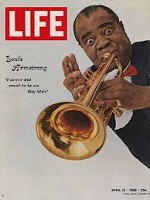

In 1923 after being abandoned by his father and ho mother, getting adopted by the Lithuanian-Jewish immigrant Karnofsky family, causing him to wear a Star of David pendant for life, then mentored by Joe "King" Oliver and Fate Marable, taking Oliver's place in Kid Ory's band in 1919 before moving to Chicago, Ill. last year to join Oliver's Creole Jazz Band, New Orleans, La.-born jazz trumpeter Louis "Satchmo" "Pops" Armstrong (1901-71) records his first solo. In Oct. 1924 he moves to New York City at the invitation of Fletcher Henderson to play with his orchestra, moving the focus of Am. jazz from Chicago to the Big Apple before returning to Chicago in Nov. 1925, where he meets newly-arrived Duquesne, Penn.-born jazz pianist Earl Kenneth "Fatha" Hines (1903-83). reforming his Hot Five band to replace Lil Hardin Armstrong with him, going on to play at the Sunset Cafe and record the Hot Five and Hot Seven Sessions (1925-8), popularizing scat (wordless) singing, with Armstrong switching from the cornet to the trumpet; in 1926 they release Muskrat Ramble, written by Kid Ory (1886-1973); in 1927 the Sunset Cafe closes, after which Hines forms his own band, which on Dec. 28, 1828 opens at the Grand Terrace Cafe in Chicago, controlled by Al Capone. On Dec. 5, 1928 Louis Armstrong and Hines record Weather Bird. On May 13, 1938 Armstrong and his orchestra release When the Saints Go Marching In, which becomes his signature song. On Dec. 31, 1918 Jeepers Creepers, written by Harry Warren (1893-1981) and Johnny Mercer (1909-76) debuts in the film "Going Places"; Armstrong sings it to a horse; "Jeepers Creepers, where'd ya get those peepers?/ Jeepers Creepers, where'd ya get those eyes?" In late Feb. 1949 Armstrong, who left New Orleans in 1922 returns for the biggest Mardi Gras ever, achieving his lifelong ambition of being made King Zulu (in black face, throwing coconuts), and receiving nat. publicity, although he is disturbed by the appearance of segregation and has to stay in a Jim Crow hotel, causing him to vow never to return, saying "Honestly, they treat me better all over the world than they do in my hometown." In 1955 he and Velma Middleton release All That Meat and No Potatoes (by Fats Waller and Ed Kirkeby). On Dec. 3, 1963 he records Hello, Dolly (#1 in the U.S., ending the streak of 3 #1s in a row over 14 weeks by The Beatles), written by Jerry Herman for the 1955 Thornton Wilder play "The Matchmakers", causing the play to be renamed after the song becomes a hit. Too bad, he gives his birthdate as July 4, 1900, and it takes until the mid-1980s to find out the true date of Aug. 4, 1901.
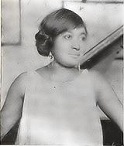
In 1923 Chattanooga, Tenn.-born jazz blues musician Lovie Austin (Cora Calhoun) (1887-1972) moves to Chicago, Ill., starting as a piano player in vaudeville and backing blues singers Ma Rainey, Ida Cox, Alberta Hunter et al. before starting her own band the Blue Serenaders, incl. Tommy Ladnier, Bob Shoffner, Natty Dominique, Shirley Clay, Kid Ory, Albert Wynn, Jimmy O'Bryant, and Johnny Dodds, and singing Heebie Jeebies (1926) with Louis Armstrong and his Hot Five.

In 1923 Columbus, Ga.-born Ma Rainey (Gertrude Malissa Nix Pridgett) (1886-1939) signs with Paramount Records, recording 100 songs by 1928 incl. "C.C. Rider", "Jelly Bean Blues", "Ma Rainey's Black Bottom", and "Bo Weavil Blues", becoming known as "the Mother of the Blues".
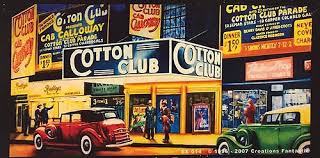
In 1923 the Cotton Club night club in Harlem, N.Y. at 142nd St. and Lenox Ave. opens (until 1935) as a whites-only establishment featuring mainly black entertainers, incl. Louis Armstrong, Count Basie, Cab Calloway, Duke Ellington, Billie Holiday, Lena Horne, Fats Waller, Ethel Waters, the Nicholas Brothers, and Stepin Fetchit; Sun. nights are Celebrity Night, with guests incl. Fanny Brice, Eddie Cantor, Jimmy Durante, Judy Garland, George Gershwin, Moss Hart, Langston Hughes, Al Jolson, NYC Mayor Jimmy Walker et al.; in 1936-40 it repons in the midtown Theater District.

In 1924 after appearing in the Ziegfeld Follies with Bob Hope and Fanny Brice, St. Louis, Mo.-born naughty African-Am. jazz singer ("the Bronze Venus") ("the Bronze Pearl") ("the Jazz Cleopatra") ("the Creole Goddess") Josephine Baker (Freda Josephine McDonald) (1906-75) becomes a star in Paris with such acts as the seminude "Danse Sauvage", and the "Banana Dance", costumed in a girdle of rhinestone-studded bananas, becoming the first African-Am. female to star in a major motion picture, to integrate a U.S. concert hall, and become a world-famous entertainer, ending up one of the richest black women in the world and a nat. heroine in France with a Legion of Honor for supporting the WWII resistance, getting offered the leadership of the U.S. civil rights movement in 1968 by Coretta Scott King after the MLK Jr. assassination in 1974 she makes a 50th anniv. comeback with an entrance on a motorcyle; too bad, she dies broke.

In 1924 Alderson, W. Va.-born cigar-chomping jazz singer Ada Beatrice Queen Victoria Louise Virginia "Bricktop" Smith (1894-1984) opens the Chez Bricktop jazz cabaret in Paris (until 1939), attracting clientele incl. Cole Porter, the Duke and Duchess of Windsor, John Steinbeck, and F. Scott Fitzgerald, becoming known as "the Doyenne of Cafe Society", having a lezzie affair with Josephine Baker; Cole Porter writes the song Miss Otis Regrets for her; in 1929 it moves to 66 Rue Pigalle, and shuts down in 1939 after the Nazis invade Paris.



In 1924 MCA (Music Corp. of America) is founded by Jules C. Stein (1896-1981) et al. as a music booking agency in Chicago, Ill., going on to book big bands incl. King Oliver and Jelly Roll Morton and His Red Hot Peppers, becoming the world's largest talent agency by the late 1930s, moving to Beverly Hills in 1939 and gaining the nickname "The Octopus", triggering endless monopoly investigations by the U.S. Dept. of Justice; in 1936 Lewis Robert "Lew" Wasserman (1913-2002) joins it, rising to head in 1948, and becoming famous for taking down the Hollywood studio system, causing him to be known as the Pope of Hollywood.
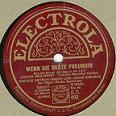

The Silent Generation of people born in 1925-45 go through Hell in the Great Depression, which messes their minds up permanently, causing them to spoil their Baby Boomer kids, priming the rock and roll explosion of the 1960s, thanks mom and pop, never trust anybody over 30. In 1925 the Electrola record label is founded in Berlin by the Gramophone Co., merging in 1931 with the Columbia Gramophone Co. ("His Master's Voice" label) to form the Electric and Musical Industries Ltd. (EMI) label.

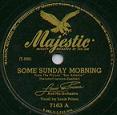
On Jan. 1, 1926 Irish-Am. Dem. Greenwich Village alderman and Tin Pan Alley songwriter James John "Jimmy" "Beau James" Walker (1881-1946) was sworn in as mayor of New York City, becoming known as Beau James as he made the Big Apple friendly to the Jazz Age by allowing speakeasies to proliferate while he enjoyed chorus girls, leaving his wife for Ziegeld Follies showgirl Betty Compton (1907-44). Too bad, the Great Depression gave Cardinal Patrick Hayes an excuse to come down on his case, blaming his immorality for everything, leading to corruption investigations, after which he resigned on Sept. 1, 1932 and skipped to Europe for awhile to avoid prosecution and marry his Betty; after the heat died down, he returned and became pres. of jazz label Majestic Records, mismanaging it until it folded in 1948.
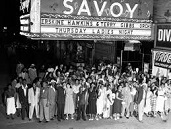
On Mar. 12, 1926 the Savoy Ballroom at 596 Lenox Ave. between 140th and 141st Sts. in Harlem, Manhattan, N.Y., owned by white businessman Jay Faggen and Jewish-Am. businessman Moe Gale opens, becoming "the Heartbeat of Harlem" (Langston Hughes), becoming a major jazz venue, with customers "Swinging at the Savoy" (Barbara Englebrecht); it closes on July 10, 1958.
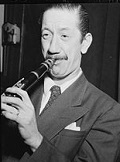
In 1926 Maplewood, Mo.-born Muskogee, Okla.-raised jazz clarinetist Charles Ellsworth "Pee Wee" Russell (1906-69) begins playing with the Jean Goldkette Band, switching to the Red Nichols Band in New York City in 1927, going on to become famous doing gigs at Nick's Jazz Club in Manhattan, N.Y. in 1937, developing his own spontaneous style; n, "No one familiar with the characteristic excitement of his solos, their lurid, snuffling, asthmatic voicelessness, notes leant on till they split, and sudden passionate intensities, could deny the uniqueness of his contribution to jazz." (Philip Larkin) Listen.
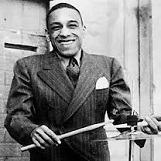
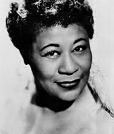
In 1926 Baltimore, Md.-born drummer William Henry "Chick" Webb (1905-39), who suffers from TB of the spine, leaving him short and hunchbacked forms a band in Harlem, N.Y., which becomes the house band at the Savoy Ballroom in 1931, promoting the new style of swing music, winning several battles of the band against Count Basie, Duke Ellington et al., causing him to become known as "the King of Swing"; in 1935 he begins featuring teenie singer "First Lady of Song", "Lady Ella" Ella Jane Fitzgerald (1917-96), who scores a hit with A-Tisket, A-Tasket (1938).

On Feb. 4, 1927 Philly-born jazz guitarist ("the Father of Jazz Guitar") Eddie Lang (Salvatore Massaro) (1902-33), Frankie Trumbauer (sax), and Bix Beiderbecke (cornet) record Singin' the Blues, which beccomes a jazz std., causing banjo players to switch to guitar. In 1922 Lang releases Eddie's Twister, and April Kisses. Too bad, after Bing Crosby talks him into a tonsillectomy so cure his hoarse voice so he can appear in his talkies, Lang dies of hemorrhage on Mar. 26, 1933 in New York City.

On Oct. 6, 1927 Richard O. Fleischer's The Jazz Singer debuts, based on the play "Day of Atonement" by Samson Raphaelson, becoming the first talking picture (talkie), produced by Warner Brothers in the Vitaphone sound-on-disc process, starring Lithuanian-born Jewish actor Al Jolson (Asa Yoelson) (1886-1950) (first openly Jewish U.S. actor) in black face, inaugurating the era of the Hollywood "talkie" at Warner's Theater on Broadway, and making $3M in profit on a $500K investment, after which the Hollywood Big Five Studios (Warner Bros., MGM, Famous Players, RKO, Fox) try to block the growth of talkies, causing maverick Warner Bros. to churn out 12 of them in 1928 alone; the Jazz Singer's name is Jack Robin, and the first words ever spoken onscreen are "Wait a minute, wait a minute, you ain't heard nothing yet" (reel #2); the part was turned down by George Jessel (star of the 1925 stage production) over money, relegating his movie career to the dumps; Jolson did it for less money and backed the movie financially, becoming known as "the World's Greatest Entertainer"; Eddie Cantor also turned it down; adding sound to movies revolutionizes the industry, and puts Am. Federation of Musicians members out of work, helped by a rush to hire English actors for their clearer diction; features the song Blue Skies; "No closer approach to resurrection has ever been made by science" (Prof. M. Pupin); "Men and women whose names were known throughout the land disappeared as though they had been lost at sea" (Jack Warner); "They made me sound as if I'd been castrated" (Tallulah Bankhead); "Talkies didn't do more to the industry than turn it upside down, shake the entire bag of tricks from its pocket, and advance Warner Brothers from last place to first in the league" (Variety); remade in 1980 starring Neil Diamond in a real woofer?


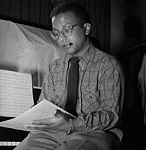
On Dec. 4, 1927 after being discovered by Jewish-Am. music publisher Irving Mills (1894-1985) at the Kentucky Club on West 49th St. between 7th Ave. and Broadway, Washington, D.C.-born jazz pianist Edward Kennedy "Duke" Ellington (1899-1974) and his Kentucky Club Orchestra open at Harlem's Cotton Club, expanding to an 11-piece band, where his music becomes known for its exotic jungle style; even though he does no composing, Mills owns 50% of Ellington and gets his name on his music; in Dec. 1938 Ellington meets Dayton, Ohio-born composer-arranger William Thomas "Billy" Strayhorn (1915-67) in Pittsburgh, Penn., hiring him for the next 25 years, composing "Take the A Train", "Chelsea Bridge", "Lush Life" et al. before his early death from esophageal cancer; "Billy Strayhorn was my right arm, my left arm, all the eyes in the back of my head, my brain waves in his head, and his in mine."
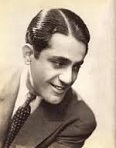
In 1927 after debuting on BBC Radio in 1926, Filipino-born jazz pianist Federico "Fred" Elizalde (1907-79) and His Cambridge Undergraduates begin a run at the Savoy Hotel in London, England, helping launch British jazz, esp. when it pisses-off the establishment, making him more popular?; they go on to release Stomp Your Feet (1927), Crazy Rhythm (1929), and Singapore Sorrows (1929); too bad, the Great Depression puts him out of business.
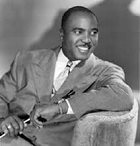
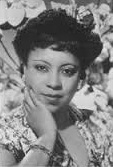
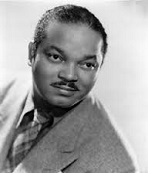
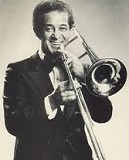
In 1929 Fulton, Miss.-born jazz alto saxophonist James Melvin "Jimmie" Lunceford (1902-47) takes his Manassas H.S. band (Memphis, Tenn.) band the Chickasaw Syncopators pro, moving into the Cotton Club in 1934, with their Cotton Club Parade featuring singer Adelaide Louise Hall (1901-93) and arrangements by Battle Creek, Mich.-born trumpeter-composer Melvin James "Sy" Oliver (1910-88), introducing the Lunceford two-beat and becoming a swing band considered the equal of Duke Ellington's, Earl Hines', and Count Basie's, with hit songs incl. Stratosphere (1934), I'm Nuts about Screwy Music (1935), Rhythm Is Our Business (1935), My Blue Heaven, I Want the Waiter (With the Water), Four or Five Times, Wham (Re-Bop-Boom-Bam), For Dancers Only (by Sy Oliver) (1937) (which becomes their theme song), Luneceford Special (1939), and Uptown Blues (1939); in 1937 jazz trombonist James "Trummy" Young (1912-84) joins (until 1943), co-writing their hit song T'ain't What You Do (It's the Way That You Do It) (1939) with Sy Oliver, which becomes a favorite of shim sham tap dancers; too bad, on July 12, 1947 Lunceford collapses at a record store in Seaside, Ore. and dies; in 1939 Sy Oliver joins the Tommy Dorsey Orchestra as an arranger the same year that Fletcher Henderson joins the Benny Goodman Orchestra as an arranger, helping Buddy Rich decide to join Tommy Dorsey, going on to compose "Yes, Indeed!", "Opus One" et al.; Young joins the Benny Goodman Orchestra in 1945, followed by the Louis Armstrong All-Stars in 1952-64, releasing their version of Saint Louis Blues in 1954.

In 1929 New York City-born jazz Harlem stride pianist Thomas Wright "Fats" Waller (1904-43) releases his first big hit Ain't Misbehavin', with lyrics by Andy Razaf (1895-1973), a descendant of Queen Ranavalona III of Madagascar; he follows with Honeysuckle Rose (1934), with lyrics by Andy Razaf, and All That Meat and No Potatoes, with lyrics by Ed Kirkeby that have a dirty double entendre; too bad, after his performance of "Ain't Misbehavin' in the 1943 film "Stormy Weather" becomes a hit, he contracts pneumonia and dies on a cross-country train trip in Kansas City, Mo.; his funeral in Harlem, N.Y. is attended by 4K, with the eulogy delivered by Adam Clayton Powell Jr., who utters the soundbyte that Waller "always played to a packed house"; his ashes are scattered over Harlem by an airplane flown by an unidentified black WWI pilot.

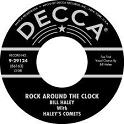
In 1929 Decca Records is founded in Britain by Sir Edward Roberts Lewis (1900-80), who establishes a U.S. label in 1934, which signs big name black entertainers incl. Louis Armstrong, Count Basie, Billie Holiday, the Mills Brothers, and the Ink Spots, as well as top white entertainers incl. Judy Garland, the Andrews Sisters, and the Dorsey Brothers; too bad, WWII causes connections between the two organizations to be severed for decades.



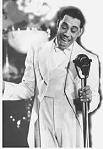



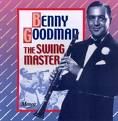
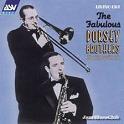
In the 1930s the Big Band Era and the Swing Era began. Top jazz entertainers incl. Edward Kennedy "Duke" Ellington (1899-1974), known for the signature tune Take the 'A' Train (by Billy Strayhorn) (1941), Louis Daniel "Satchmo" "Pops" Armstrong (1901-71), known for When the Saints Go Marching In, and Hello, Dolly! (1964), William "Count" Basie (1904-84), known for One O'Clock Jump (1937), Cabell "Cab" Calloway III (1907-94), known for Minnie the Moocher (1931), Billie "Lady Day" Holiday (Eleanora Fagan) (1915-59), known for Strange Fruit (1939) ("NAACP propaganda" - Time mag.), and Ella Jane "Lady Ella" "First Lady of Song" Fitzgerald (1917-96), known for A-Tisket, A-Tasket (1938), and Oh, Lady Be Good (1947). Not all jazz musicians were black, which was no surprise, as white audiences would only listen to white musicians. Top white jazz entertainers incl. Alton Glenn Miller (1904-44), known for In the Mood (1939), Tuxedo Junction (1939), Moonlight Serenade (1939), Little Brown Jug (1939), Pennsylvania 6-5000 (1940), American Patrol (1941), Chattanooga Choo Choo (1941), and A String of Pearls (1942), Benjamin David "Benny" "King of Swing" Goodman (1909-86), known for Sing, Sing, Sing (1935), and The Dorsey Brothers, known for Lullaby of Broadway (1935).
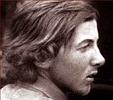
In 1931 Am. composer Henry Dixon Cowell (1897-1965) invented the Rhythmicon (Polyrhythmophone), the first electronic rhythm machine.

In 1931 after bringing their "Brown Sugar" revue there last year, Rochester, N.Y.-born jazz singer-bandleader ("the Hi De Ho Man") Cabell "Cab" Calloway III (1907-94) and his orchestra replace Duke Ellington and his orchestra (until 1934), going on to release hits incl. Minnie the Moocher (1931), which sells 1M copies, featuring the chorus "Hi De Hi De Hi De Hi"; it is turned into a Betty Boop Cartoon, which ends up getting banned for suggesting interracial sex? In 1932 he releases Reefer Man; "If he said he swam to China, and he sell you South Carolina/ Then you know you're talkin' to the reefer man."
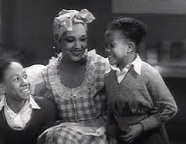
On June 4, 1932 Roy Mack's Pie, Pie Blackbird (Warner Bros.) debuts, starring "Black Garbo" Nina Mae McKinney (1912-67), along with the jazz band of Eubie Blake and Noble Sissle, becoming the debut of the sensational tap-dancing Nicholas Brothers Fayard Nicholas (1914-2006) and Harold Nicholas (1921-2000); it incl. It Takes a Blackbird to Make the Sweetest Pie.
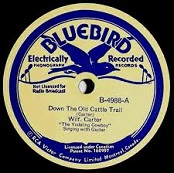
In 1932 Bluebird Records is founded by RCA Victor to service the budget market, releasing dance music incl. George Hall and His Orchestra, Artie Shaw, Glenn Miller, Earl Hines, and Shep Fields and his Rippling Rhythm Orchestra, country artists incl. the Monroe Brothers, the Delmore Brothers, Bradley Kincaid, Jimmie Rodgers, and the Carter Family, jazz artists incl. Duke Ellington, Jelly Roll Morton, Bennie Moten, and McKinney's Cotton Pickers, and blues artists (until 1942) incl. Chicago artists Big Bill Broonzy, Tampa Red, Washboard Sam, Roosevelt Sykes, and Sonny Boy Williamson.
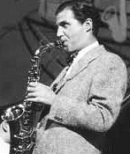
In 1933 New York City-born jazz saxophonist Charles Daly "Charlie" Barnet (1913-91) starts his own swing jazz band, becoming one of the first to integrate it, hiring Oscar Pettiford, Roy Eldridge, Lena Horne, Buddy DeFranco, getting run out of New Orleans in 1935 by La. gov. Huey Long, who doesn't like swing music; in 1939 he releases the hit Cherokee (Indian Love Song) (by Ray Noble), folowed in 1944 by Skyliner, after which he switches from swing to bebop before retiring in 1949.


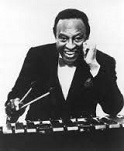
The original black, two Jews and a cripple? In 1933 Chicago, Ill.-born Jewish clarinetist Benjamin David "Benny" Goodman (1909-86) organizes his own integrated jazz trio incl. Teddy Wilson and Gene Krupa, which scores bigtime on Aug. 21, 1935 at the Palomar Ballroom in Hollywood, Calif., and by 1936 becomes the most popular jazz group in the U.S., adopting black music to a style that whites go for, initiating the Swing Music Era (ends 1946), and fueling the Jitterbug dance craze; the Benny Goodman Trio features Goodman on clarinet, Eugene Bertram "Gene" Krupa (1909-73) on drums, and light-tapping Theodore Shaw "Teddy" Wilson (1912-86) on piano, who is black, making public performances in front of white audiences a risk, but they chance it and the integrated band is accepted, opening da door for others, starting with Ella Fitzgerald in 1936l; in Nov. 1936 after John Hammond introduces him, Goodman adds xylophone player Lionel "Leo" "Hamp" Hampton (1908-2002) to make a quartet. On Jan. 16, 1938 Benny Goodman gives his famous Jazz Concert in Carnegie Hall in New York City, "the single most important jazz or popular music concert in history: jazz's 'coming out' party to the world of 'respectable' music", which results in the 1950 double album (first-ever) The Famous 1938 Carnegie Hall Jazz Concert (1M copies).

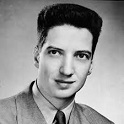
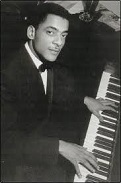
In 1933 New York City-born record producer and civil rights activist John Henry Hammond II (1910-87) (discoverer of Fletcher Henderson, Benny Carter, Art Tatum, Benny Goodman, Fletcher Henderson et al.) discovers Philly-born jazz-blues vocalist Billie "Lady Day" Holiday (Eleanora Fagan Gough) (1915-59), who signs in 1935 with Brunswick Records and collaborates with Austin, Tex.-born jazz pianist Theodore Shaw "Teddy" Wilson (1912-86) on the new swing jazz style, pioneering improvisation and releasing her first hit What a Little Moonlight Can Do, making her a star, going on to revamp pop tunes and turn them into jazz classics, incl. Twenty-Four Hours a Day (#6 in the U.S.), Yankee Doodle Went to Town, and I Cried for You; in 1934 jazz tenor saxophonist Lester Young rooms at her mother's boarding house, recording with her and giving her the nickname "Lady Day", while she nicknames him "Prez/Pres". In 1936 she he has a hit with Summertime from George Gershwin's "Porgy and Bess" before joining the Count Basie Orchesta in late 1937, competing against the Chick Webb Band and Ella Fitzgerald, with a battle of the bands on Jan. 16, 1938 at the Savoy Ballroom becoming a push with mag. editors put a 3-1 V for Fitzgerald, after which she is fired in Feb. 1938 and hired by the Artie Shaw Band 1 mo. later, despite being a black woman working for a white orchestra, becoming the first full-time black female singer tours the Am. South with a white bandleader; too bad, after being forced to use the service elevator at the Lincoln Hotel in New York City in Nov. 1938, she quits, releasing I'm Gonna Lock My Heart (#2 in the U.S.) in Dec., followed by Strange Fruit (by Abel Meeropol, about a lynching) on Apr. 20, 1939 for Commodore Records, becoming her biggest hit although radio stations refuse to play it ("Strange fruit hanging from the poplar tree"); in 1941 she releases God Bless the Child (co-written by Athur Herzog Jr.) (#3 in the U.S.) (1M copies), followed by Lover Man (#5 R&B), Trav'lin Light (June 24, 1942) (#18 in the U.S.) (#1 R&B), recorded with the Paul Whiteman Band for Capitol Records. Too bad, on May 16, 1947 after reaching the top she and becoming a drug addict, leaving her hubby (since 1941) Jimmy Monroe in 1947 for her drug dealer Joe Guy, she is arrested for narcotics possession in New York City, ending up in Alderson Federal Prison Camp in W. Va. AKA Camp Cupcake, and being released for good behavior on Mar. 16, 1948 and playing to a sold-out crowd at Carnegie Hall on Mar. 27, unwittingly sticking a hatpin in some gardenias into her head and passing out; on Jan. 22, 1949 she is arrested at Hotel Mark Twain in San Francisco, Calif. befoe releasing her hit Crazy He Calls Me (Oct. 1949). In 1956 she pub. her autobio. (w/William Duffy) Lady Sings the Blues, which is filmed in 1972 starring Diana Ross. On Nov. 10, 1956 she performs two concerts at Carnegie Hall, which is released in album form in 1961 as The Essential Billie Holiday. She dies on July 17, 1959 (3:10 a.m.) at Metropolitan Hospital in New York City of cirrhosis of the liver under arrest for drug possession in a hospital bed, with a total of $750 in assets on her person, and $0.70 in the bank.
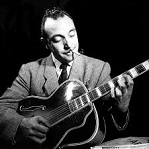
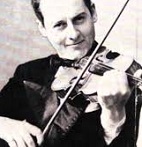
In 1934 the all-string jazz band Quintette du Hot Club de France is founded in Paris, France by jazz guitarist Jean "Django" Reinhardt (1910-53) and jazz violinist ("the grandfather of jazz violinists") Stephane (Stéphane) Grappelli (Grappelly) (1908-97), with members incl. Louis Vola (bass), Roger Chaput (guitar), and Joseph Reinhardt (guitar), becoming "one of the most original bands in the history of recorded jazz" (Thom Jurek), releasing Minor Swing, and Nuages; they disband in 1948.

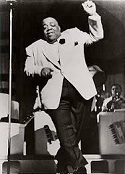
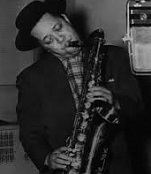
In 1935 jazz singer James Andrew "Jimmy" Rushing (1901-72), known as "Mr. Five by Five" because he's "5 ft. tall and 5 ft. wide" joins the orchestra of Red Bank, N.J.-born jazz pianist William "Count" Basie (1904-84) and his Barons of Rhythm in Kansas City, Mo., where he becomes a star for Going to Chicago, Take Me Back, Baby and Sent For You Yesterday. In 1936 Count Basie and his orchestra move from Kansas City, Mo. to Chicago, Ill., where they become known for their "jumping" beat; members incl. Lester Willis "Prez/Pres" Young (1909-59) (tenor sax) (known for wearing a pork pie hat and holding his sax up in the air while playing, and inventing much of the hipster/hepcat jargon for jazz), Herschel Evans (sax), Freddie Green (guitar), Jo Jones (drums), Walter Page (bass), Earle Warren (sax), Buck Clayton (trumpet), Harry Edison (trumpet), Benny Morton (trombone), Dickie Wells (trombone); next year they move to New York City and sign singer Billie Holiday, and in 1938 get in a battle of the bands with Chick Webb's band and his lead singer Ella Fitzgerald.
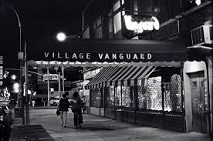
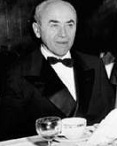
On Feb. 22, 1935 the Village Vanguard (originally the Golden Triangle) nightclub in Greenwich Village, N.Y. at Charles St. and Greenwich Ave. opens, owned by Belarus-born Max Gordon (1903-89), becoming a venue for folk music and beat poetry, getting into jazz bigtime and switching to all jazz in 1957, hosting a who's who of jazz greats from the 1940s-1980s and helping launch the careers of Thelonius Monk, Barbara Streisand, Pearl Bailey, Woody Allen, Dick Gregory, Lenny Bruce, Irwin Corey, Woody Guthrie, Lead Belly et al.


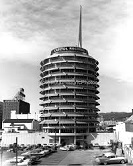

In 1936 Montgomery, Ala.-born jazz pianist-singer Nat King Cole (Nathaniel Adams Coles) (1919-65) and his band, incl. older brother Eddie (bass) release their first recording, moving to Long Beach, Calif. to play in Eubie Blake's revue Shuffle Along before forming the King Cole Swingsters, incl. Oscar Moore (guitar), and Wesley Prince (bass), which performs on NBC's Blue Network in 1938, working up to weekly performances on CBS-Radio's The Orson Welles Almanac in 1944 after releasing Sweet Lorraine (by Cliff Burwell and Mitchell Paris) on Decca Records in 1940 then signing with Capitol Records in 1943 and releasing his first hit Straighten Up and Fly Right (1943) (500K copies), becoming the first black to crossover to a white audience, followed by The Christmas Song (1946) (by Mel Torme and Robert Wells), (Get Your Kicks on) Route 66 (1946) (by Bobby Troup), Nature Boy (1948) (#1 in the U.S. for 8 weeks), composed by 1940s original Hippie songwriter eden ahbez (George Alexander Aberle) (1908-95) (ahbe), who lives under the first L in the HOLLYWOOD sign and thinks mankind isn't worthy of capital letters, Mona Lisa (1950) (#1 in the U.S.), Too Young (1951) (#1 in the U.S.), and Unforgettable (1951) (#1 in the U.S.), which becomes his signature song. In 1957 he releases the all-jazz album After Midnight (#13 in the U.S.). His hits pay for the new circular Capitol Records Bldg. at Hollywood and Vine in Los Angeles, Calif. (1956), which becomes known aas "the House that Nat Built". On Nov. 5, 1956 The Nat King Cole Show debuts on NBC-TV for 47 episodes, becoming the first U.S. TV network variety show hosted by an African-Am., airing its last episode on Dec. 17, 1957 after no nat. sponsor is found, causing Cole to utter the soundbyte: "Madison Avenue is afraid of the dark." Too bad, in Aug. 1948 he buys a house in the upscale allwhite Hancock Park neighborhood of Los Angeles, Calif. from Col. Harry Gantz, husband of silent film actress Lois Weber, pissing-off the neighbors and causing the KKK to burn a cross on his front lawn, after which the property owners assoc. tells him that they don't want any undesirables moving into the neighorhood, and he replies: "Neither do I, and if I see anybody undesirable coming in here, I'll be the first to complain." In 1956 after photos of him surrounded by adoring white female fans are circulated, he is attacked by three members of the North Ala. White Citizens Council, led by Asa Earl "Forrest" Carter (1925-79) during a concert with Ted Heath in Birmingham, Ala., after which he never performs in the South again; in 1956-7 he performs in Cuba, never mind they won't let him stay at the hotel; too bad, his performances in front of segregated Jim Crow audiences pisses-off the NAACP, whose chief legal counsel Thurgood Marshall calls him an Uncle Tom and says he should perform with a banjo, after which thousands of blacks in Harlem, N.Y. boycott him until he joins the NAACP and becomes a civil rights activist. Too bad, the British Invasion causes his career to tank, but he has a last hit in 1962 with the country-ish Ramblin' Rose (#2 in the U.S.) (1M copies).

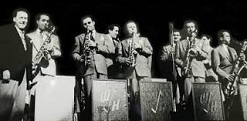


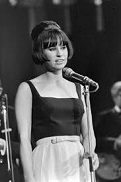
In 1936 Milwaukee, Wisc.-born jazz clarinetist-saxophonist Woodrow Charles "Woody" Herman (1913-87) founds The Herd, billed as "The Band That Plays the Blues", recording on the Decca label, starting with Wintertime Dreams on Nov. 6. In 1939 they switch to progressive jazz, releasing their first hit Woodchopper's Ball (5M copies). In Feb. 1945 they sign with Columbia Records, releasing their first hit Laura (from the 1944 film), followed by Caldonia (Feb. 26, 1945), and The Ebony Concerto (by Igor Stravinsky) (1946) before disbanding in Dec. 1946 due to Woody's wife Charlotte's alcohol-pill addiction problems; seven other big bands dissolve the same month, ending the Big Band Era. In 1947 Herman founds the Second Herd, featuring The Four Brothers Band, incl. baritone saxophonist Serge Chaloff (1923-57), tenor-soprano saxophonist John Haley "Zoot" Sims (1925-85), tenor saxophonist Herbert Bickford "Herbie" Stewart (1926-2003), and tenor saxophonist Stanley "Stan" Getz (1927-91), releasing Four Brothers on Dec. 27. In 1950-6 he founds the Third Herd, followed in 1959-87 by the New Thundering Herd. In 1963 Stan Getz and Brazilian guitarist Joao Gilberto (1931-) release the album Getz/Gilberto, which spawns a bossa nova craze in the U.S., winning the first album of the year Grammy for jazz (1965) (next 2008). On July 25, 1964 Getz, Joao Gilberto (1931-), and Antonio Carlos Jobim (1927-94) release the hit bossa nova jazz song The Girl from Ipanema (#5 in the U.S.) (#29 in the U.K.), about the fashionable seaside neighborhood of Ipanema in Rio de Janeiro, inspired by 17-y.-o. Henoisa Eneida Menezes Paes Pinheiro (nee Pinto) (1945-), who likes to sashay past the Velosa Bar-Cafe to get wolf whistles; features Brazilian singer Astrud Gilberto (nee Weinert) (1940-), wife (since 1959) of Joao Gilberto, whom she leaves in the mid-1960s for Getz.
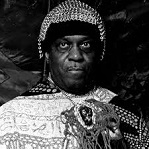
In 1936/7 (1952?) Birmingham, Ala.-born jazz musician Herman Poole Blount (1914-93) allegedly is contacted by ETs, who teleport him to Saturn, with the soundbyte: "My whole body changed into something else. I could see through myself. And I went up... I wasn't in human form... I landed on a planet that I identified as Saturn... They teleported me and I was down on stage with them. They wanted to talk with me. They had one little antenna on each ear. A little antenna over each eye. They talked to me. They told me to stop [attending college] because there was going to be great trouble in schools... The world was going into complete chaos... I would speak [through music], and the world would listen. That's what they told me." He then changes him name to Le Sony'r Ra, later Sun Ra, claiming to be an ET from Saturn on a mission to Earth to preach peace, pioneering the Afrofuturism movement, incl. the novels of Samuel R. Delany and Octavia Butler, the art works of Jean-Michel Basquiat, and the photography of Renee Cox.

In 1936-7 after allegedly making a Faustian bargain with the Devil, Hazlehust, Miss.-born blues singer Robert Leroy Johnson (1911-38) releases his landmark Miss. Delta Blues recordings that later influence Eric Clapton et al., getting him inducted into the Rock and Roll Hall of Fame as an "early influence". His best-known recordings are Sweet Home Chicago, and Malted Milk. On Aug. 16, 1938 he dies a tragic early death after being poisoned by a jealous husband, becoming the first member of the 27 Club.
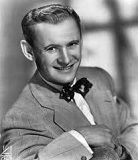
In 1937 Lakewood, Ohio-born jazz big bandleader Sammy Kaye (Samuel Zarnocay Jr.) (1910-87) and his orchestra (w/The Kaydets incl. Tommy Ryan, Don Cornell et al.) release Rosalie (#1 in the U.S.), Josephine (#15 in the U.S.), and Swing and Sway, which becomes his signature tune, with "Swing and sway with Sammy Kaye" becoming his signature line; in 1938 he releases Love Walked In (#1 in the U.S.), followed by Penny Serenade (1939) (#2 in the U.S.), White Sails (Beneath a Yellow Moon) (1939) (#4 in the U.S.), Let There Be Love (1940) (#4 in the U.S.), Dream Valley (1940) (#1 in the U.S.), Daddy (1941) (#1 in the U.S.), Remember Pearl Harbor (1942) (#3 in the U.S.), I Left My Heart at the Stagedoor Canteen (1942) (#3 in the U.S.), Chickery Chick (1945) (#1 in the U.S.), I'm a Big Girl Now (1946) (#1 in the U.S.), The Old Lamplighter (1946) (#1 in the U.S.), That's My Desire (1947) (#2 in the U.S.), Serenade of the Bells (1947) (#3 in the U.S.), Careless Hands (1949) (#3 in the U.S.), and Room Full of Roses (1949) (#2 in the U.S.). In 1950 he releases the album Harbor Lights, which incl. It Isn't Fair (#2 in the U.S.), and Harbor Lights (#1 in the U.S.), which becomes his new signature tune. In 1951 he hosts "The Sammy Kaye Show" on CBS-TV (until 1952, then on NBC-TV in summer 1953), followed by So You Want to Lead a Band on ABC-TV (Aug. 5, 1954 - Jan. 27, 1955), and "Sammy Kaye's Music from Manhattan" on ABC-TV (1958-9).

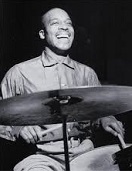
In 1937 after attempting to improvise and losing the tune, 16-y.-o. Kansas City, Kan.-born alto jazz saxophonist Charles "Charlie" "Yardbird" "Bird" Parker Jr. (1920-55) has a cymbal contemptuously thrown at his feet (not his head) by Chicago, Ill-born Count Basie Orchestra drummer (1934-48) Jonathan David Samuel "Jo" Jones (1911-85) at the Reno Club in Kansas City, who kicks him out, causing him to vow "I'll be back" and practice harder than ever, returning next year as the greatest jazz saxophonist of all time (until ?). In 1945 he releases Groovin' High. In 1947 he releases the album Ornithology: Classic Recordings 1945-1947. In 1948 he releases Out of Nowhere. On Mar. 12, 1955 he dies of complications of heroin addiction while watching "The Dorsey Brothers' Stage Show" on TV at the Stanhope Hotel suite of Baroness Pannonica de Koenigswarter in New York City.
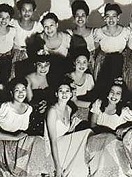
In 1937 the all-teenie swing-jazz band Internat. Sweethearts of Rhythm is formed at Piney Woods Country Life School in Miss., going on to relocate to Arlington, Va. and recruit adult Asian, Black, Caucasian, Indian, Latina, and Puerto Rican members, becoming the first integrated all-women's band in the U.S., going on to play at the Apollo Theatre in Harlem, N.Y., the Regal Theatre in Chicago, Ill., the Cotton Club in Cincinnati, Ohio et al. before touring U.S. troops in Europe in 1945, becoming the first black women to travel with the USO.
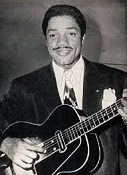
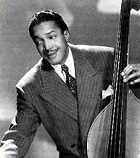
In 1938 Cuban-born Am. jazz musician Bulee "Slim" Gaillard (1916-91) and Englewood, N.J.-born jazz bassist Leroy Eliot "Slam" Stewart (1914-87) release their first (biggest) hit Flat Foot Floogie (with a Floy Floy) (#2 in the U.S.), going on to act in films incl. Hellzapoppin' (1941).
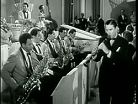
In 1938 New York City-born jazz clarinetist Artie Shaw (Arthur Jacob Arshawsky) (1910-2004) and his band release their first hit Begin the Beguine (by Cole Porter), becoming an overnight sensation, going on to serve in the U.S. Navy in 1942-4 entertaining troops in the South Pacific with his band.


In Jan. 1939 Albany, Ga.-born jazz trumpeter Henry Haag James (1916-83) starts the big band Harry James and His Music Makers in Philly, financially backed by Benny Goodman, becoming the first name band to hire Hoboken, N.J.-born singer ("Ol' Blue Eyes") ("the Chairman of the Board") ("the Wop") Francis Albert "Frank" Sinatra (1915-98) for $75/week after hearing him at his first important singing engagement at the Rustic Cabin nightclub in N.J., suggesting he change his name to Frankie Satin; on July 13 Sinatra records his first song From the Bottom of My Heart for Columbia Records, followed on Sept. 17 by All or Nothing at All; too bad, the band doesn't click until he adds a string section in 1941, scoring his first top-10 hit in Dec. 1941 with You Make Me Love You, taking over for Glenn Miller in 1942 after he disbands his orchestra to join the U.S. Army, then calls it quits in 1946.


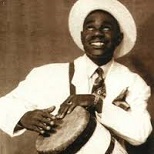
In 1939 Cheraw, S.C.-born jazz trumpeter John Birks "Dizzy" Gillespie (1917-93), known for playing with pouched cheeks while wearing a beret and horn-rimmed spectacles joins Cab Calloway's Big Band at the Cotton Club in Harlem, until a fist-knife fight gets him fired in late 1941, after which in 1943 he joins the Earl Hines Band, which about 1943 pioneers Bebop (music for listening rather than dancing) before moving to the band of Billy Eckstine, developing bebop further with Charlie Parker. In 1942 he releases A Night in Tunisia, after which the 1942-44 musicians' strike gives him time to perfect his new sound, releasing a string of new records in 1945 incl. Salt Peanuts, Woody 'n' You (about Woody Herman), Groovin' High, and Hot House. In 1947 he hires Cuban drummer Chano Pozo (Luciano Pozo Gonzalez) (1915-48), pioneering Cubop AKA Afro-Cuban Jazz. On Jan. 6, 1953 he throws a party for his wife Lorraine at Snookie's in Manhattan, and his trumpet's bell gets bent upward in an accident, but he likes the sound so much he has a special trumpet made with a 45 deg. raised bell, becoming his trademark.

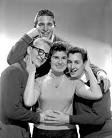
Speaking of jungle music. In 1939 South African Zulu musician Solomon Popoli Linda (1909-62) and The Evening Birds released the single Mbube (Zulu "lion"), an a capella song written by Linda that became a big hit in South Africa, selling 100K copies, about King Chaka the Lion, who didn't die when whitey took over his country, but went to sleep, and will one day awaken; the chorus is "uyimbube" (you're a lion). Too bad, when The Weavers covered the song in 1952 they changed the title and chorus to Wimoweh, and didn't pay Linda proper royalties, causing him to lose millions until his family began suing in 2004. Meanwhile in 1961 the Brooklyn, N.Y. doowop group The Tokens, consisting of Neil Sedaka (1939-) (quit in 1957), Hank Medress (1938-2007), Cynthia Zolotin (quit in 1957), Jay Siegel, Mitch Margo (tenor), Phil Margo (baritone), and Joe Venneri (guitar) released the #1 U.S. single Wimoweh: The Lion Sleeps Tonight (#11 in the U.K.), and the coverup was complete until the Internet Age?

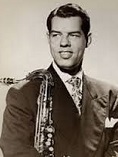
In 1939 after dropping out of the U. of Colo. and working his way up to his own big band, Clarinda, Iowa-born jazz trombonist Alton Glenn Miller (1904-44) hits it big with a string of hits, incl. In the Mood, composed by Joe Garland and Andy Razaf; based on "Tar Paper Stomp" by Wingy Manone (1930); starts out with a famous sax section theme joined by trumpets and trombones after 13 counts; sung by saxophonist Gordon Lee "Tex" Beneke (1914-2000); also Tuxedo Junction, which sells 115K copies the first week); in 1939 Time mag. prints the soundbyte: "Of the twelve to 24 discs in each of today's 300,000 U.S. jukeboxes, from two to six are usually Glenn Miller's." In 1940 he releases Pennsylvania 6-5000, Careless, Fools Rush In (Where Angels Fear to Tread), Blueberry Hill The Woodpecker Song, When You Wish Upon a Star, and In the Mood. In 1941 Glenn Miller Orchestra with the Modernaires release At Last (#9 in the U.S.), written by Mack Gordon and Harry Warren for the film "Orchestra Wives" (1942), and sung by Ray Eberle (1919-79); also Chattanooga Choo-Choo (#1 in the U.S.) (first gold record in history, 1.2M copies), written by Mack Gordon and Harry Warren for the film "Sun Valley Serenade", and sung by Gordon Lee "Tex" Beneke (1914-2000); also Song of the Volga Boatmen, You and I, and Elmer's Tune. On Sept. 27, 1942 Glenn Miller and his Orchestra perform together for the last time at the Central Theatre in Passaic, N.J. before Miller enters the U.S. Army; too bad, on Dec. 14, 1944 his plane goes missing over the English Channel.
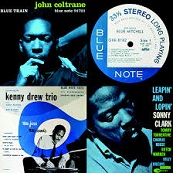
In 1939 Blue Note Records is founded by Alfred Lion (1908-87), Francis Wolff (1907-71), and Max Margulis (1907-96) to release jazz music, concentrating on modern jazz in 1947 incl. hard pop, avant-garde jazz, and free jazz, signing Thelonious Monk, Fats Navarro, Bud Powell, Horace Silver, Jimmy Smith, Freddie Hubbard, Lee Morgan, Art Blakey, Grant Green, Hank Mobley, Wayne Shorter, Bobby Hutcherson, and Jackie McLean; in the 1950s they hire photographer Reid Miles (1927-93), who creates a series of iconic album covers.
In 1940 New York City begins the Cabaret Card System, preventing people of "bad character" from working on licensed premises that serve alcohol, which ends up being used by the police to destroy the livelihood of performers incl. Billie Holiday, Chet Baker, Charlie Parker, Thelonious Monk, Jackie McLean, Elmo Hope, Billy Higgins, and Lenny Bruce; after control is removed from the NYPD in 1961, the system is abolished in 1967.
In 1940 Keynote Records is founded by record store owner Eric Bernay to release folk and protest songs, signing the Almanac Singers et al. before expanding to jazz in 1943, signing Count Basie, Roy Eldridge, Coleman Hawkins, Dinah Washington, Lester Young et al. before going bankrupt in 1948 and being acquired by Mercury Records.

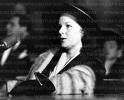
On Dec. 2, 1941 Howard Hawks' Ball of Fire (a morphing of "The Wizard of Oz") debuts, about eight zany professors, incl. Oscar Homolka as Prof. Gurkakoff, Richard Haydn as Prof. Oddly, and too-young-to-be-one Gary Cooper as Bertram Potts, an English prof. studying to write an encyclopedia article on modern slang, and Barbara Stanwyck as Katherine "Sugarpuss" O'Shea, a tempting gang moll using his Totten Foundation house as a hideout; while sexually-naive bookworm Potts studies phrases such as "drum boogie", "killer diller", "hoiti toiti", "slap happy", "bim buggy", "shove in your clutch", "shout the sherbert to me Herbert", "what's buzzin', cousin?", "what's boolin', shug?"; "crabapple Annie", "mankika", and "mahaha", they fall in love, and now all he has to do is beat her gangster beau Joe Lilac (Dana Andrews) in a fistfight; co-stars "Queen of the Mafia" Virginia "Sugar" Hill (1916-66), who is escorted to the premiere by her beau Bugsy Siegel, whose friend George Raft testifies on his behalf this year to get him off bookmaking charges; features Drum Boogie, composed and performed by Gene Krupa, with Stanwyck's singing dubbed by Martha Tilton; too bad, the comedy is overshadowed by the tragedy of the entire post-WWI gen. about to march to WWII?

In 1941 Wichita, Kan.-born jazz pianist Stanley Newcomb "Stan" Kenton (1911-79) (protege of Earl Hines) forms the Innovations Orchestra in Los Angeles, Calif., pioneering the West Coast sound, hiring soloists Art Pepper, Stan Getz, Boots Mussulli, and Anita O'Day, releasing hits for Capital Records incl. "And Her Tears Flowed Like Wine" and with their signature song Artistry in Rhythm (1943), pioneering progressive jazz; in 1950 he forms the 39-piece Modern Music Orchestra; in 1960-3 he forms the Mellophonium Band, releasing the albums Kenton's West Side Story (1961) and Adventures in Jazz (1962); in 1962 he releases the single Mama Sang a Song (#32 in the U.S.). In 1964 he releases the album Kenton Plays Wagner.
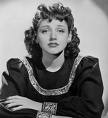
In 1941 after competing in Walk-a-thongs in 1933-4, then working for the Max Miller Quartet, Kansas City, Mo.-born jazz singer Anita O'Day (Anita Belle Colton) (1919-2006) (who changed her last name to O'Day, pig Latin for "dough", as in money) joins Gene Krupa's band, taking over the "Drum Boogie" singing role, and releasing her first hit Let Me Off Uptown, a duet with Roy Eldridge, becoming Down Beat mag.'s new star of 1941; too bad, in 1943 Krupa is arrested for marijuana possession, and his band breaks up, causing her to go solo, flirting with Woody Herman's band and Stan Kenton's band, scoring a big hit with And Her Tears Flowed Like Wine (1944) before rejoining Krupa's band in 1945-6 and going solo again; in 1952-1962 she attains fame in West Coast jazz by releasing 17 albums for Norman Granz's Norgran and Verve labels, incl. the albums Anita O'Day Sings Jazz (The Lady Is a Tramp) (1952), and Songs by Anita O'Day (An Evening with Anita O'Day) (1954); in 1959 she tours Europe with Benny Goodman.


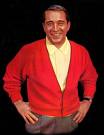
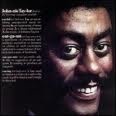
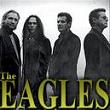
In Feb. 1942 RCA awarded the first-ever Gold Record to Glenn Miller (1904-44) for his hit Chattanooga Choo Choo, signifying 1M copies sold. The first gold LP was awarded to the album Calypso by Harry Belafonte (1927-). In 1958 the Recording Industry Assoc. of America (RIAA) trademarked the term gold record in the U.S. to signify 500K copies sold, and on Mar. 14, 1958 they certified Catch a Falling Star by Perry Como (1912-2001) as the first RIAA gold single, and Oklahoma! Soundtrack as the first gold album in July 1958. In 1976 they certified the single Disco Lady by Johnnie Taylor (1934-2000), and the album Their Greatest Hits (1975-1975) by the Eagles as the first platinum records (1M sold).
On July 31, 1942 (midnight) the 1942-44 Musicians' Strike against the major Am. recording cos. over royalty payments boycotts recording sessions but not live radio shows or concerts; on Oct. 27, 1943 musicians are allowed to make special V-Discs for the armed forces; in Sept. 1943 Decca Records settles, followed by Capitol Records on Oct. 11, 1943; on Oct. 4, 1944 Pres. FDR tries to get the union to capitulate, but they stand firm, and on Nov. 11, 1944 RCA Victor and Columbia capitulate, ending the strike; too bad, record sales jump from 127M in 1941 to 275M in 1946, and 400M in 1947, mainly hurting the big bands as vocalists move into the vacuum.

In 1942 after leaving Benny Goodman's Orchestra in 1940, Louisville, Ky.-born "King of the Vibraphone" Lionel Leo "Hamp" Hampton (1908-2002 and his orchestra release the big band jump blues song Flying Home, features the honking tenor sax of Jean-Baptiste Illinois Jacquet (1922-2004), which becomes Hampton's signature tune and a prototype of the honking sax in jazz and rock & roll. In Aug. 1988 he performs Hamp's Boogie at the Newport Jazz Festival in Madarao.
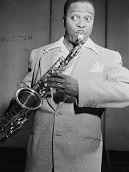
In 1942 Brinkley, Ark.-born jump blues and R&B saxophonist-bandleader Louis Thomas Jordan (1908-75) and His Tympany Five release their first U.S. R&B hit I'm Gonna Leave You on the Outskirts of Town" (#3 R&B), followed by What's the Use of Getting Sober (When You Gonna Get Drunk Again) (#1 R&B) (1942), Ration Blues (#1 R&B) (#1 country) (first crossover hit) (1943), G.I. Jive (#1 R&B) (#1 U.S.) (1944), Mop! Mop! (#1 R&B) (1945), Caldonia (#1 R&B) (#6 U.S.) (1945), Buzz Me (#1 R&B) (#9 U.S.), Don't Worry 'Bout That Mule (#1 R&B) (1946), Stone Cold Dead in the Market (He Had It Coming) (w/Ella Fitzgerald) (#1 R&B) (1946), Choo Choo Ch'Boogie (#1 R&B) (#7 U.S.) (1946), Ain't That Just Like a Woman (They'll Do It Every Time) (#1 R&B) (1946), Ain't Nobody Here But Us Chickens (#1 R&B) (#6 U.S.) (1946), Texas and Pacific (#1 R&B) (1947), Jack, You're Dead" (#1 R&B) (1947), Boogie Woogie Blue Plate (#1 R&B) (1947), Run Joe (#1 R&B) (1948), Beans and Corn Bread (#1 R&B) (1949), Saturday Night Fish Fry (#1 R&B) (1949), and Blue Light Boogie (#1 R&B) (1950). He goes on to become known as "the Father of Rhythm & Blues" and "the Grandfather of Rock and Roll", making a fan of Bill Haley, Chuck Berry, Little Richard, and James Brown, who benefit from his popularity with white audiences in a segregated society.
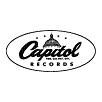



In 1942 songwriter John Herndon "Johnny" Mercer (1909-76), songwriter-film producer George Gard "Buddy" DeSylva (1895-1950), and record store owner Glen Wallichs (1910-71) found Capitol Records (originally Liberty Records) in Los Angeles, Calif., becoming the first record company on the U.S. West Coast.


In spring 1943 after winning a $10 prize at an audition, Newark, N.J.-born jazz singer Sarah Lois "the Divine One" "Sailor" "Sassy" Vaughan (1924-90) debuts at the Apollo Theater in Harlem, N.Y., causing Earl "Fatha" Hines to hire her as his singer on Apr. 4, joining Dizzy Gillespie, Charlie "Bird" Parker, Bennie Green et al. before moving to the band of Billy Eckstine (the singer she replaced) in 1944, making her first recording on Dec. 5, I'll Wait and Pray; in 1945 she goes solo, starting with Lover Man (May 11), hiring trumpeter George Treadwell as her mgr. (who she married on Sept. 16, 1946), and going on to release hits incl. If You Could See Me Now (by Tadd Dameron) (1946), Don't Blame Me (1946), I've Got a Crush on You (1946), Everything I Have Is Yours (1946), Body and Soul (1946), Tenderly (1947), It's Magic (Dec. 27, 1947) (from the Doris Day film "Romance on the High Seas"), Nature Boy (Apr. 8, 1948), Black Coffee (1949) et al. In summer 1949 Chicago disk jockey David Cunningham "Dave" Garrow (1913-82) coins her nickname "The Divine One"; in 1949-53 she signs with Columbia Records, and in 1953-9 with Mercury Records; in 1958 she divorces Treadwell and marries Clyde "C.B." Atkins, divorcing him in Nov. 1963 after his gambling puts her in debt; in 1970 she marries Marshall Fisher and begins a new career, signing with Mainstream Records in 1970-4, and Pablo Records in 1977-82.
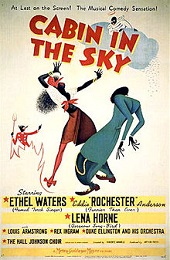
On Apr. 9, 1943 Vincente Minelli's Cabin in the Sky (MGM), based on the 1940 Lynn Root play debuts, an MGM musical starring the cream of black performers of the day, incl. Ethel Waters as Petunia Jackson, Eddie "Rochester" Anderson as Little Joe Jackson, and Lena Horne as Georgia Brown, who is edited so she can be taken out for theaters in states which ban black performers, becoming her only leading role in an MGM musical; also features Louis Armstrong and Duke Ellington; does $1.95M box office on a $679K budget.
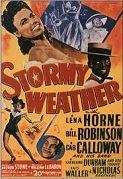
On July 21, 1943 Andrew L. Stone's Stormy Weather debuts, a 20th Cent. Fox musical written by Frederic J. Jackson and Ted Koehler, starring Cab Calloway and His Cotton Club Orchestra, and Bedford-Stuyvesant, Brooklyn, N.Y.-born "Bronze Venus" Lena Mary Calhoun Horne (1917-2010) as Selina Rogers, who woos black dancer Bill Williamson (Bill Robinson), based on Bill "Bojangles" Robinson; features performances by Katherine Dunham and Her Troupe, Fats Waller, The Nicholas Brothers, The Tramp Band, and Dooley Wilson; incl. Stormy Weather by Lena Horne, and the Jumpin' Jive Sequence, which Fred Astaire calls "The greatest movie musical number he had ever seen."
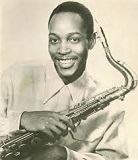
In 1943 Boston, Mass.-born jazz saxophonist Edward "Sonny" Stitt (Edward Boatner Jr.) (1924-82) first meets Charlie Parker, discovering that their styles are extraordinarily similar, causing Kenny Clarke to latter utter the soundbyte "Even if there had not been a Bird, there would have been a Sonny Stitt"; too bad, he also becomes an alcohol-heroin addict, but kicks the habits, releasing his best album (of 100+) Tune Up in 1972, featuring Tune Up (by Miles Davis).
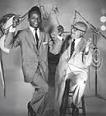
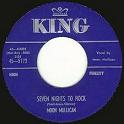
In 1943 Cincinnati, Ohio-born Jewish-Aam. jukebox record store owner Sydney "Syd" Nathan (1904-68) founds King Records in Cincinnati to distribute hillbilly music, expanding to "race records" by African-Ams., going on to promote the Delmore Brothers, the Stanley Brothers, Moon Mullican, Cowboy Copas, Grandpa Jones, and discover R&B king James Brown in 1956; the motto is: "If it's a King it's a hillbilly".
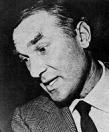
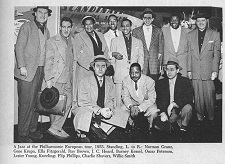
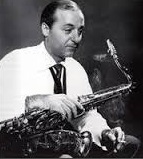
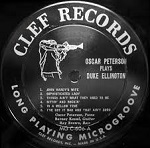
On July 2, 1944 (Sun.) the first Jazz at the Philharmonic Concert is held at the Philharmonic Auditorium in Los Angeles, Calif., organized by Los Angeles, Calif.-born jazz impresario Norman Granz (1918-2001), featuring Nat King Cole, Les Paul, Illinois Jacquet et al.; the last is held in 1983; jazz tenor saxophonist Flip Phillips (Joseph Edward Filipelli) (1915-2001) plays at all the concerts from 1946-57; in 1946 Granz founds the jazz label Clef Records, which goes on to sign Gene Krupa, Oscar Peterson, Charlie Parker, Bud Powell, Lionel Hampton, Art Tatum, Illinois Jacquet, Count Basie, Flip Phillips, Buddy Rich et al.; he later merges it with Verve Records (founded 1956).

In 1944 Los Angeles, Calif.-born 6'6" jazz-bebop tenor saxophonist "Long Tall" "Sophisticated Giant" Dexter Gordon (1923-90) (disciple of Lester Young) is featured by the Fletcher Henderson band, the Louis Armstrong band, and the Billy Eckstine band, going solo in 1945 in New York City before moving to Los Angeles in 1947, where he becomes known for tenor sax duels with Wardell Gray (1921-55), which get mentioned in Jack Kerouac's "On the Road"; he goes on to influence John Coltrane and Sonny Rollins.
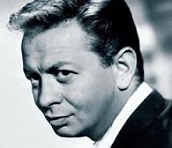
In 1944 after graduating from h.s., Chicago, Ill.-born jazz singer Melvin Howard "Mel" Torme (Tormé) (1925-99) forms Mel Torme and His Mel-Tones, incl. Les Baxter and Ginny O'Connor, modeled on Frank Sinatra and the Pied Pipers but with a jazz orientation, fronting for the Artie Shaw band and releasing their first hit What Is This Thing Called Love? (by Cole Porter); in 1945 while trying to keep cool during a hot summer, Torme and Robert Wells compose Nat King Cole's big hit The Christmas Song (Chestnuts Roasting), which Torme releases in 1954 as The Christmas Song (Chestnuts Roasting), becoming the top Christmas song of the cent.?; in 1947 he goes solo, singing at the Copacabana Club in New York City, where disc jockey Fred Robbins gives him the nickname "The Velvet Fog"; in 1949 he moves to Los Angeles, Calif. and signs with Capitol Records, releasing Careless Hands (1949) (#1 in the U.S.), Again (1949), and Blue Moon (1949) (his signature song), pioneering cool jazz and stoking the West Coast jazz movement; too bad, when rock and roll becomes popular in the mid-1950s, he calls it "3-chord manure" while his popularity tanks.
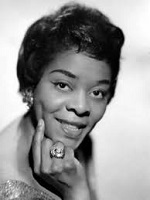
In 1944 after joining the Lionel Hampton Band in 1943, Tuscaloosa, Ala.-born jazz-blues singer ("Queen of the Blues") Dinah Washington (Ruth Lee Jones) (1924-63) signs with Keynote Records, releasing the R&B hits Evil Gal Blues, and Salty Papa Blues; in 1946 after leaving Hampton's band and signing with Mercury Records, she releases Ain't Misbehavin' (by Fats Waller), followed by a string of 27 R&B top-10 hits in 1948-55, incl. Am I Asking Too Much (1949) (#1 R&B), Baby Get Lost (1949) (#1 R&B), I Wanna Be Loved (1950) (#1 R&B) (#22 in the U.S.), and Cold, Cold Heart (1951) (#3 R&"B). On Aug. 15, 1954 she records the live album Dinah Jams with Clifford Brown and Clark Terry. In 1959 she releases What a Diff'rence a Day Made (#4 in the U.S.), followed by Unforgettable (by Irving Gordon) (1959), Baby (Youve Got What It Takes) (w/Brook Benton) (1960) (#5 in the U.S.) (#1 R&B), A Rockin' Good Way (To Mess Around and Fall in Love) (w/Brook Benton) (#1 in the U.S.) (#1 R&B), and September in the Rain (#23 in the U.S.) (#5 R&B).
In 1945 World War II (begun 1939) ended, leaving the U.S. in military control of the world, with half its wealth, and after the 90%-white GIs returned home they began having babies like rabbits, creating the Baby Boomers (born in 1946-64), history's most privileged generation, incl. TLW - they didn't start rock and roll, but they finished it, I hope not.
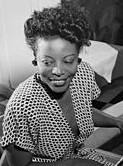
In 1945 Atlanta, Ga.-born East Liberty, Pittsburgh, Penn.-raised jazz pianist Mary Lou Williams (nee Mary Elfrieda Scruggs) (1910-81) releases her first record "The Zodiac Suit", followed in 1953 by "The First Lady of the Piano", "A Keyboard History" (1953), "Messin' Round in Montmarte" (1959), "Black Christ of the Andes" (1963), "Music for Peace" (1964), "Mary Lou's Mass" (1964), "From the Heart" (1970), Zoning (Oct. 1974), Free Spirits (July 8, 1975) (her biggest hit?), "Embraced" (w/Cecil Taylor) (1977), "My Mama Pinned a Rose on Me" (1977), and "Solo Recital" (1978). She also releases records with Dizzy Gillespie and Buddy Tate, and composes and arranges for Duke Ellington and Benny Goodman, becoming a mentor to Thelonious Monk, Charlie Parker, Miles Davis, Tadd Dameron, Dizzy Gillespie, and Bud Powell, going on to become known as "the first great female instrumentalist in jazz". Listen to "Free Spirits".
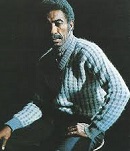
In 1945 after leaving the Jimme Lunceford Orchestra (where he replaced Sy Oliver in 1939), Shelby, Miss.-born jazz trumpeter Gerald Stanley Wilson (1918-2014) forms his own band, going on to write arrangements for Benny Carter, Ray Charles, Duke Ellington, Dizzy Gillespie, Ella Fitzgerald, Lionel Hampton, Billie Holiday, Dinah Washington, Nancy Wilson et al.

In Aug. 1946 after seeing Charlie Parker perform for the first time on June 5, 1945, inspiring him, Hamlet, N.C.-born jazz saxophonist John William "Trane" Coltrane (1926-67) is discharged from the U.S. Navy, heading for Philly, switching from alto to tenor saxophone and playing with Dizzy Gillespie, Earl Bostoc, Johnny Hodges, and Theolonius Monk before hooking up with Miles Davis in summer 1955, releasing album #5 (first for Atlantic Records) (his breakthrough album) Giant Steps on Jan. 27, 1960. In 1960 after hearing saxophonist John Gilmore, Coltrane goes bigtime into free jazz, leaving Atlantic Records for the new Impulse! Records and playing a gig at the Village Vanguard in Nov. 1961 with a quintet incl. Eric Dolphy (bass clarinet), Reggie Workman (bass)/Jimmy Garrison (bass), McCoy Tyner (piano), and Elvin Jones (drums), releasing album #10 Coltrane "Live" at the Village Vanguard (Mar. 1962), which features Chasin' the Trane; too bad, Down Beat mag. calls it "Anti-Jazz", and he is booed in France in 1961, which doesn't stop him from releasing the album Impressions in July 1963, which incl. India, which turns on Roger McGuinn and The Byrds, who base their 1966 single "Eight Miles High" on it. On Dec. 9, 1964 he releases the album A Love Supreme (featuring Archie Shepp), which becomes his masterpiece; a result of his exposure to Ahmadiyya Islam?; incl. Acknowledgement, Resolution, Pursuance, and Psalm. In Feb. 1966 he releases the album Ascension, a continuous 40-min. performance sans breaks, becoming "the torch that lit the free jazz thing" (Dave Liebman).
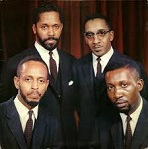
In 1946 the Modern Jazz Quartet (the Milt Jackson Quartet until 1952) is founded by Dizzy Gillespie band members John Aaron Lewis (1920-2001) (piano), Milton "Bags" Jackson (1923-99) (vibraphone), Raymond Matthews "Ray" Brown (1926-2002) (bass), who in 1952 is replaced by Percy Heath (1923-2005) (bass), and Kenneth Spearman "Kenny" "Klook" Clarke (1914-85), who in 1955 is replaced by Connie Kay (Conrad Henry Kirnon) (1927-94) (drums); in 1956 they release the album Django, which features Django, followed by the album Fontessa (1956), which features Fontessa, and the album The Modern Jazz Quartet (1957), which features Bags' Groove; they disband in 1974, then reform in 1981-93.
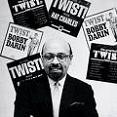
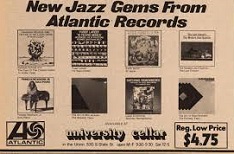
In Sept. 1947 Ahmet Ertegun (1923-2006), son of a Turkish ambassador founds Atlantic Records in New York City, going on to sign and popularize Ray Charles, Aretha Franklin, and The Rolling Stones.

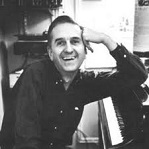
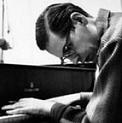
In 1947 after dropping out of Juilliard School of Music in 1945 to go pro, Alton, Ill.-born jazz trumpeter Miles Dewey Davis III (1926-91) begins playing in Charlie Parker's quintet in 1947 (replacing Dizzy Gillespie, who left in 1945), leaving in 1948 and pioneering cool jazz with a nonet incl. Gerry Mulligan (baritone sax), John Lewis (piano), Mike Zwerin (trombone), Lee Konitz (alto sax), Junior Collins (French horn), Bill Barber (tuba), Al McKibbon (bass), and Max Roach (drums), recording the album Birth of the Cool in 1949-50 before switching to hard bop; on Oct. 21, 1957 after teaming with Toronto-born jazz pianist Ian Ernest Gilmore "Gil" Evans (Green) (1912-88) he releases Miles Ahead, pioneering Third Stream, a fusion of jazz with European classical and world music; they follow with Porgy and Bess (Mar. 9, 1959), based on the 1934 George Gershwin opera, and Sketches of Spain (July 18, 1960). Meanwhile on Aug. 17, 1959 after pairing with Plainfield, N.J.-born jazz pianist William John "Bill" Evans (1929-80), Davis releases his magnum opus Kind of Blue (Columbia Records), becoming the best-selling jazz record of all time (4M copies by Oct. 7, 2008); on Dec. 15, 2009 the U.S. House of Reps passes a resolution recognizing the album's 50th anniv., "honoring the masterpiece and reaffirming jazz as a national treasure." In Oct. 1961 Bill Evans releases album #6 Sunday at the Village Vanguard, recorded on June 25 with bassist Rocco Scott LaFaro (1936-61) (who dies in a car accident on July 6, 10 days after the recording session while returning from the Newport Jazz Festival) and drummer Stephen Paul Motian (1931-2011), which becomes one of the best live jazz albums of all time; it incl. Solar (by Miles Davis), Gloria's Step (by Scott LaFaro), and All of You (by Cole Porter). Evansfollows with album #7 Waltz for Debby, recorded on June 25, 1961; it incl. Waltz for Debby. On Mar. 30, 1970 Miles Davis releases the double album Bitches Brew, experimenting with the electric piano and guitar, pioneering jazz rock, selling 500K copies; it incl. Bitches Brew.

On June 18, 1948 after German-Hungarian engineer Peter Carl Goldmark (1906-77) invents the 10"/12" diam. 33-1/3 rpm LP (long-playing) vinyl record (35/45 min./side), Columbia Records announces it at the Waldorf Astoria Hotel, causing RCA next year to introduce the 45 pm record as a competitor, allowing the masses to buy more and more and more music by the album or track, helping to launch the pop/rock era; in 1951 Columbia Records began releasing 45 rpm records, allowing games to be played by record companies with packaging and promotion; in 1952 Columbia introduces extended-play LPs (26 min./side).


In Sept. 1948 Miss.-born talking blues musician John Lee Hooker (1917-2001) releases the singles Boogie Chillen', Hobo Blues, and Crawling King Snake, laying the foundations for rock and roll. In 1962 he releases Boom Boom (#60 in the U.S.).

In 1948 Flint, Mich.-born jazz singer Betty "the Kid" Carter (Lillie Mae Jones) (1929-98), known for her improvisational technique and scat singing joins the Lionel Hampton Band, with his wife giving her the name "Betty Bebop", and leaves in 1951 after being fired 7x when her scatting clashes with his swing style, releasing the bebop album Out There in 1958, which incl. I Can't Help It, and You're Driving Me Crazy (by Walter Donaldson); in 1960 she begins touring with Ray Charles, releasing duets incl. Baby, It's Cold Outside (1961).
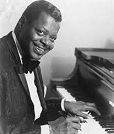
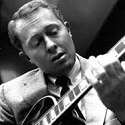
In 1949 jazz impresario Norman Granz discovers Montreal-born Canadian jazz pianist Oscar Emmanuel Peterson (1925-2007), becoming his mgr. and getting him a gig at Carnegie Hall; he goes on to be called "the Maharaja of the Keyboard" by Duke Ellington, forming the Oscar Peterson Trio with Ray Brown and Charlie Smith (drums), who is replaced by Irving Ashby (guitar), who is replaced by Barney Kessel, who is replaced by white guitarist Mitchell Herbert "Herb" Ellis (1921-2010), making them an integrated band, getting them in trouble, which doesn't stop them from releasing the albums Oscar Peterson Plays Duke Ellington (1952), Oscar Peterson at the Stratford Shakespeare Festival (1956), On the Town with the Oscar Peterson Trio (1958), A Jazz Portrait of Frank Sinatra (1958), Oscar Peterson Plays the Duke Ellington Song Book (1959), and Canadiana Suite (1964), composing Hymn to Freedom for the U.S. civil rights movement in 1962.

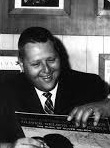
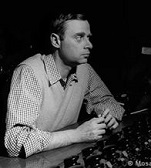
In 1949 Prestige Records is founded in New York City by Bob Weinstock (1928-2006) to release jazz albums, signing Stan Getz, Annie Ross, Sonny Stitt, and Charlie Parker (who uses the alias Charlie Chan), working with Jersey City, N.J.-born recording engineer Rudy Van Gelder (1924-), who starts out with Alfred Lion of Blue Note Records in 1952 and becomes #1 in his field for jazz; in 1954 Prestige releases the hit Moody's Mood for Love by King Pleasure; in 1971 it is acquired by Fantasy Records, which is later acquired by Concord Records.
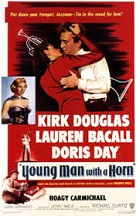
On Feb. 9, 1950 Michael Curtiz's Young Man with a Horn (Warner Bros.) debuts, based on the 1938 novel by Dorothy Baker about jazz trumpeter Bix Beiderbecke, starring Kurt Douglas as horn player Rick Martin, who spirals down toward alcoholism, Doris Day as his babe Jo Jordan, and Lauren Bacall as his other babe (closet lez?) Amy North.
In 1950 the first 45 rpm jukeboxes (replacing 78 rpm models) are introduced by Seeburg Corp. (known as the Trashcan) and Ristaucrat Inc. of Appleton, Wisc.; in 1951 Victor and Columbia agree to split the record market, with Victor selling LPs and Columbia selling 45 rpm records.

On Apr. 4, 1951 Astoria, Queens, N.Y.-born singer Tony Bennett (Anthony Dominick Benedetto) (1926-) (the closest thing to Frank Sinatra without being him) records his first hit Because of You (by Arthur Hammerstein and Dudley Wilkinson) (#1 in the U.S.) (1M copies), followed by Cold, Cold Heart (by Hank Williams) (1951) (#1 in the U.S.), Blue Velvet (by Bernie Wayne and Lee Morris) (1951) (#16 in the U.S.), and Rags to Riches (by Richard Adler and Jerry Ross) (1953) (#1 in the U.S.), based on a Charlie Chaplin movie tune about a magic elf who regained her youth by drinking three cups of enchanted Gypsy blood; used to start out the 1990 film "Goodfellas", where Henry Hill says: "As far back as I remember, I always wanted to be a gangster." In 1954 he follows with Stranger in Paradise (from "Kismet") (#1 in the U.S. and U.K.). On Feb. 25, 1955 he releases his jazz-oriented debut album Cloud 7 with guitarist Chuck Wayne. On Dec. 1, 1957 he releases the jazz-oriented album The Beat of My Heart with jazz musicians Ralph Sharon (piano), Al Cohn (tenor sax), Ned Adderley (trumpet), Herbie Mann (flute), Art Blakey (drums), Jo Jones (drums), Candido Camero (drums), Chico Hamiton (drums) et al., after which he becomes the first male pop vocalist to sing with the Count Basie Orchestra, releasing the albums In Person! (Mar. 1959), featuring Pennies from Heaven (by Johnny Burke and Arthur Johnson), and Basie Swings, Bennett Sings (Strike Up the Band) (May 1959), featuring Chicago (by Fred Fisher). On Feb. 2, 1962 he releases I Left My Heart in San Francisco (by George Cory and Douglass Cross) (#19 in the U.S.), which becomes his signature song, and an official anthem for you know what. He goes on to sell 50M records worldwide.
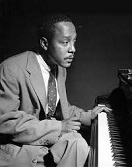
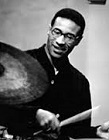
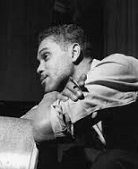
On May 1, 1951 Harlem, N.Y.-born jazz pianist Earl Rudolph "Bud" Powell (1924-66), records Un Poco Loco (Sp. "A Little Crazy") for Blue Note Records, with Newland, N.C.-born jazz drummer Maxuell Lemuel "Max" Roach (1924-2007), and jazz double bassist Dillon "Curley" Russell (1917-86), which Harold Bloom later calls one of the greatest works of 20th cent. Am. art.
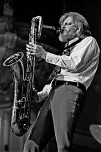

In Dec. 1951 after working with Miles Davis and mastering a melodic linear playing style inspired by Lester Young, Queens, N.Y.-born cool jazz baritone saxophonist-composer-arranger Gerald Joseph "Gerry" Mulligan (1927-96) records his first album Mulligan Plays Mulligan, featuring Bweebida Bobbida, then moves to Los Angeles, Calif. in spring 1952 to join the West Coast/Pacific jazz scene and write arrangements for the Stan Kenton Orchestra, playing gigs at The Haig jazz club on Wilshire Blvd., where he meets trumpeter ("James Dean, Sinatra, and Bix, rolled into one" - David Gelly) Chesney Henry "Chet" Baker Jr. (1929-88), forming a pianoless quartet with Bob Whitlock (bass) and Chico Hamilton (drums), releasing hit singles incl. Motel until he is arrested on heroin charges in mid-1953, spending 6 mo. in an honor farm while Baker perfects his style and goes solo, causing Mulligan to replace him with Bob Brookmeyer; in spring 1960 he forms the Concert Jazz Band to recapture the glory of big bands, releasing the album The Age of Steam in 1971, which features One to Ten in Ohio, Over the Hill and Out of the Wood, Grand Tour, K-4 Pacific, and Country Beaver. Baker goes on to release albums featuring his smooth vocals sans trumpet, incl. Chet Baker Sings (debut) (Apr. 1954), featuring Time After Time, and It Could Happen to You (Oct. 1958), featuring It Could Happen to You, I'm Old Fashioned, and My Heart Stood Still; too bad, after becoming a heroin addict in 1957, his career tanks.
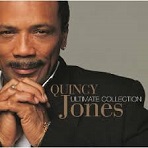
In 1952 19-y.o. Chicago, Ill.-born cool jazz trumpeter Quincy Delight Jones Jr. (1933-) joins the Lionel Hampton Orchestra, touring Europe and learning the provincialism of Am. black-white racism (giving him a lifelong desire to marry and breed with blonde-blue white women incl. actress Peggy Lipton?), joining the Dizzy Gillespie Band in 1956 and touring South Am. and the Middle East before forming his own band called The Jones Boys and settling in Paris in 1957, rising to vice-pres. of Mercury Records in 1964 (first African-Am.) and wising-up to the commercial side of the music biz, composing film scores for "The Pawnbroker" (1964), "In Cold Blood" (1967), "In the Heat of the Night" (1967), "The Color Purple" (1985) et al., and themes for TV series incl. "Sanford and Son", "Ironside", and "The Bill Cosby Show"; in 1962 he releases the album Quincy Jones (1933-), Big Band Bossa Nova, which incl. the song Soul Bossa Nova, which is used on the soundtracks of "The Pawnbroker" (1964), "Take the Money and Run" (1969), "Austin Powers" (1997) et al., and becomes the theme of the 1998 FIFA World Cup; he also goes into arranging for artists incl. Billy Eckstine, Ella Fitzgerald, Peggy Lee, Frank Sinatra, Sara Vaughan, and Dinah Washington, and producing for singers Lesley Gore, Michael Jackson et al.
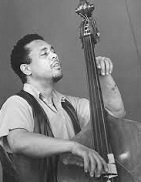
In 1952 Nogales, Ariz.-born jazz double bassist ("the Angry Man of Jazz") Charles Mingus Jr. (1922-79) (heir of Duke Ellington?) and Max Roach found Debut Records. On May 15, 1953 Dizzy Gillespie and Charlie Parker stage a bebop concert at Massey Hall in Toronto, Ont., Canada, becoming their last together; it also incl. Bud Powell, who suffers from schizophrenia and alcohol-drug addiction, and is in and out of the hospital, after which his playing career tanks; Max Roach and Charles Mingus also join, then release it on their new label Debut Records as Jazz at Massey Hall (1953). In July 1956 Mingus releases the album Pithecanthropus Erectus, which incl. Pithecanthropus Erectus, and A Foggy Day (by George Gershwin). On Sept. 14, 1959 Mingus releases the album Mingus Ah Um with Columbia Records (his first); it incl. Better Git It in Your Soul, Goodbye Pork Pie Hat (tribute to Lester Young), Fables of Faubus, and Boogie Stop Shuffle. On Oct. 12, 1962 Mingus stinks himself up with a terrible concert in New York City's Town Hall, later becoming known as the worst moment of his brilliant career. In July 1963 he releases The Black Saint and the Sinner Lady, recorded on Jan. 20 in New York City, a 6-movement ballet. In Apr./May 1964 he releases Mingus Mingus Mingus Mingus Mingus, which incl. Theme for Lester Young. In July 1964 he releases Mingus Plays Piano, recorded on July 30, 1963; it incl. Myself When I'm Real.
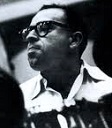
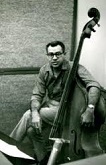
In 1952 Pacific Jazz Records in Los Angeles, Calif. is founded to release cool jazz and West Coast jazz music by producer Richard Bock (1927-88) and jazz drummer Roy S. Harte (Hartstein) (1924-2003), going on to sign Chet Baker, Paul Demond, the Jazz Crusaders, Gerry Mulligan, Joe Pass, and Gerald Wilson; in 1954 Harte co-founds Nocturne Records in Hollywood, Calif. with jazz bassist Yervant Harry "the Bear" Babasin Jr. (1921-88), which in 1954 releases the album Jazz in Hollywood before merging with the new Liberty Records on Mar. 2, 1955; in 1957 Pacific Jazz Records becomes World Pacific Records, signing Indian musicians incl. Ravi Shankar; in 1965 it is acquired by Liberty Records, which releases the hit Elusive Butterfly by Bob Lind in 1966; in 1970 it is acquired by United Artists Records, which in 1979 is acquired by EMI.
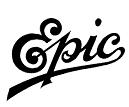
In 1953 Epic Records is founds by CBS for jazz and pop, expanding to all genres by 1960, later signing the Dave Clark Five, The Hollies, Donovan, The Yardbirds, Jeff Beck et al., followed in the 1970s by Boston, ABBA, Cheap Trick, The Clash, REO Speedwagon et al.

In 1953 Vee-Jay Records is founded in Gary, Ind. by Vivian Carter (1921-89) and James C. Bracken (1909-72) to concentrate on black music, signing John Lee Hooker, The Pips, The Dells et al., and later signing their first white act The Four Seasons, and acquiring the rights to some early Beatles records - can I ask you something, where did you get those shoes?
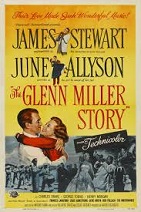

On Feb. 10, 1954 Anthony Mann's The Glenn Miller Story debuts, starring James Stewart and June Allyson, filmed at the U. of Colo. in Boulder, which he attended in 1923-4, and the Trocadero Ballroom at Elitch Gardens in Denver, where he played; C.U. later houses a Glenn Miller Archive; the debut of Cleveland, Ohio-born composer-arranger Enrico Nicola "Henry" Mancini (1924-94).

On May 20, 1954 after playing in the big bands of Fletcher Henderson and Billy Eckstine, touring Africa in 1947-8 and converting to Islam under the name Abdullah ibn Buhaina, then going back to his real name, forming the hard bop band the Jazz Messengers, backing Thelonious Monk, Miles Davis, Dizzy Gillespie, Charlie Parker, and Bud Powell, Pittsburgh, Penn.-born jazz drummer Arthur "Art" Blakey (1919-90) records his first album Blakey, which incl. Minority, followed by the album Ritual: The Modern Jazz Messengers (Jan. 14, 1957), followed by the album Moanin' (Jan. 1959), which incl. Moanin', becoming the #1 hard bop group of the 1950s; he goes on to incubate Freddie Hubbard, Wynton Marsalis, and Wayne Shorter.
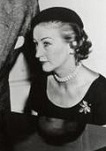
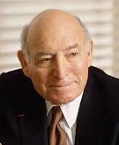

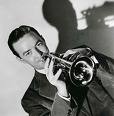

In July 1954 the first annual Newport Jazz Festival in Newport, R.I., founded by socialite Elaine Guthrie Lorrilard (1914-2007) and her hubby Louis (descendant of tobacco magnate Pierre Lorillard), organized by jazz impresario George Wein (1925-) is opened by white jazz singer Lee Wiley (1908-75), accompanied by trumpet player Robert Leo "Bobby" Hackett (1915-76); after being cancelled because of riots in 1960, 1969, and 1971, it moves to New York City in 1972, then resumes in 1981 in Newport while continuing in New York City; Concord, Calif.-born pianist David Warren "Dave" Brubeck (1920-) (who almost killed himself by diving into the surf in Hawaii in 1951, affecting his playing style) becomes the 2nd jazz musician to be featured on the cover of Time mag. (after Louis Armstrong on Feb. 21, 1949). On Dec. 14, 1954 after trying since 1946, the Dave Brubeck Quartet releases their hit album #28 Time Out (#2 in the U.S.) (1M copies), recorded at Columbia Records 30th St. Studio in New York City, which features weird time signatures; it incl. Take Five (5/4 time), Blue Rondo a la Turk (9/8 time), and Pick Up Sticks (6/4 time).

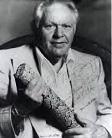
In 1955 African-American singer ("Miss Peaches") ("the Matriarch of R&B") Etta James (Jamesetta Hawkins) (1938-2012), who was born in Los Angeles, Calif. to unmarried 14-y.-o. Dorothy Hawkins, and claims her father was famous white pool shark Rudolf Walter "Minnesota Fats" Wanderone (Wanderon) Jr. (1913-96) releases her debut album Etta James, which features the tracks The Wallflower (Dance with Me, Henry), and Good Rockin' Daddy. Album #3 At Last! (1960) features the tracks At Last (#47 in the U.S.) (#2 R&B), Trust in Me (#30), All I Could Do Was Cry (#33), My Dearest Darling (#34), If I Can't Have You (w/Harvey Fuqua) (#52), and Spoonful (w/Harvey Fuqua) (#78).

In 1955 after starting out with the Coleman Hawkins Quartet in 1944 and paying his dues, becoming known as a genius of modern music, pioneering bebop, Rocky Mount, N.C.-born jazz pianist Thelonious Sphere Monk (1917-82) releases Thelonious Monk Plays Duke Ellington, his first album for Riverside Records after they buy out his contract for $108.24; too bad, they force him to perform covers out of belief that his own music is too "difficult" for the consumer market. Album #2 The Unique Thelonious Monk (1956) contains more covers. Album #3 Brilliant Corners (1956) incl. Brilliant Corners, his own composition. Album #4 Thelonious Himself (1957) incl. 'Round Midnight (his biggest hit). Thelonious Himself Album #5 Monk's Music (1957), recorded June 26 in New York City incl. Epistrophy. Album #6 Mulligan Meets Monk (1957) incl. Straight, No Chaser. Album #7 Thelonious Monk with John Coltrane at Carnegie Hall (1957), recorded on Nov. 29 in Harlem, N.Y. incl. Sweet and Lovely (by Gus Arnheim, Harry tobias, and Jules LeMare). Album #9 Misterioso (1958), recorded on Aug. 7 incl. Misterioso, and In Walked Bud. Album #16 Monk's Dream (1963) incl. Bright Mississippi.
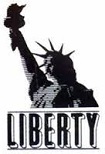
In 1955 Simon B. "Si" Waronker (1915-2005), Alvin S. "Al" Bennett (1926-89), and Theodore "Ted" Keep founds Liberty Records; its first single is "The Girl Upstairs" by Lionel Newman, followed by "Cry Me a River" by Julie London, which climbs to #9 in the U.S.; in 1956 they sign unknown Henry Mancini, who bolts in 1959 after becoming popular; their first hit rock & roll artist is Eddie Cochran; in 1957 it acquires Pacific Jazz Records, which becomes World Pacific Records, signing Indian musicians incl. Ravi Shankar; in 1958-9 it forms the sublabel Freedom Records; in 1958 it releases the hit song "Witch Doctor" (#1 in the U.S.) (4.5M copies) by David Seville, followed by the Chipmunks recordings (with chipmunks Alvin and Theodore named after Bennett and Keep), saving it from bankruptcy, allowing them to move to the prestige address 6920 Sunset Blvd. in Hollywood, Calif.; in 1960 they sign Bobby Vee, Jan and Dean, Del Shannon, Gene McDaniels, Gary Lewis and the Playboys, Vikki Carr, and Willie Nelson; in 1963-5 it is acquired by Avnet; in 1966 the reissue label Sunset Records is founded, signing jazz artists Eddie Harris, Jimmy Reed, Les mcCann, Teddy Buckner, Wild Bill Davis, Lester Young, and Chet Banker; in 1966 the sublabel Soul City Records is founded by Johnny Rivers; in 1967 they sign Canned Heat; in 1968 they are acquired by United Artists Records, signing Sugarloaf.
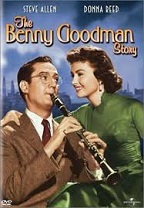
On Feb. 2, 1956 Valentine Davies' The Benny Goodman Story (Universal) debuts, starring Steve Allen as Benny Goodman, and Donnad Reed as his goy babe Alice Hammond, whom his Jewish mother (Berta Gersten) doesn't want in the family until he makes it to Carnegie Hall in 1938; Sammy Davis Sr. plays Fletcher Henderson; features appearances by Lionel Hampton, Kid Ory, Gene Krupa, Harry James et al.; "Bagels and caviar don't mix."
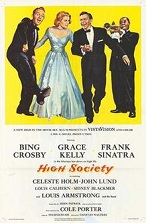
On July 17, 1956 Charles Waters' High Society (MGM), a remake of "The Philadelphia Story" set at the Newport Jazz Festival debuts, starring Grace Kelly as about-to-be-remarried divorcee Tracy Amantha Lord, and Bing Crosby and Frank Sinatra as the ex C.K. Dexter-Haven and the fiance Mike Connor; features jazz by Louis Armstrong and a score by Cole Porter, incl. his last major hit True Love; in 2006 Kelly's son Prince Albert II of Monaco (b. 1958) attends a 50th anniv. showing - and finds his true love, true love?

In Oct. 1956 New York City-born jazz tenor saxophonist Walter Theodore "Sonny" Rollins (1930-) releases Tenor Madness, recorded on May 24, which incl. Tenor Madness, a duet with John Coltrane. On June 22, 1956 his quartet incl. pianist Tommy Flanagan, bassist Doug Watkins, and drummer Max Roach records Saxophone Colossus, which is released later in the year, making him a jazz star; it incl. St. Thomas.
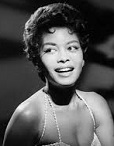

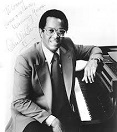
In 1956 Chicago, Ill.-born jazz singer-songwriter and civil rights activist Abbey Lincoln (Anna Marie Wooldridge) (1930-2010) releases her debut album Abbey Lincoln's Affair: A Story of a Girl in Love, featuring Love Walked In (by George and Ira Gershwin), followed by album #2 That's Him! (1957), featuring Happiness Is a Thing Called Joe (by Harold Arlen and Yip Harburg), album #3 It's Magic (1958), featuring I Am in Love (by Cole Porter), album #4 Abbey Is Blue (1959), featuring Afro Blue, and album #5 Straight Ahead (1961), featuring Straight Ahead (co-written by Earl Baker and Max Waldron), and Blue Monk (co-written by Thelonious Monk). In 1962-70 she marries Newland, N.C.-born jazz drummer Maxwell Lemuel "Max" Roach (1924-2007), releasing the albums Moon Faced and Starry Eyed (1959), We Insist! (Max Roach's Freedom Now Suite) (1960), and It's Time (1961), featuring It's Time. In 1981 she releases the album The Maestro with jazz pianist Cedar Anthony Walton Jr. (1934-2013), featuring The Maestro.
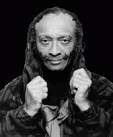
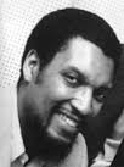
In 1956 New York City-born jazz pianist Cecil Percival Taylor (1929-), whose percussion-like style is described as "eighty-eight tuned drums", and "Art Tatum with contemporary-classical leanings" releases his debut album Jazz Advance on the new short-lived label Transition Records in Cambridge, Mass., founded in 1955 for $900 by Harvard U. grad Thomas Burchard "Tom" Wilson Jr. (1931-78), featuring Bemsha Swing (by Denzil Best and Thelonious Monk), and Azure (by Duke Ellington and Irving Mills), receiving scathing criticism that later turns into praise, pioneering free jazz; too bad, after releasing only a dozen albums by Taylor, Sun Ra, Doug Watkins, Donald Byrd, and Herb Pomeroy, Transition Records go bankrupt in 1957 and sells out to Blue Note Records and Delmark Records, after which Wilson joins Columbia Records, becoming one of the "midwives of folk-rock", producing albums by Bob Dylan, Simon & Garfunkel, The Mothers of Invention, The Animals, Velvet Underrground, The Blue Project et al.

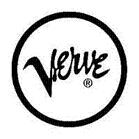
In 1956 Verve Records is founded by Los Angeles, Calif.-born jazz impresario Norman Granz (1918-2001) as a merger of Clef Records (founded 1946) and Norgram Records (founded 1953) to distribute jazz records, esp. those of Ella Fitzgerald; MGM purchases it in 1961 for $3M, and creates Verve Folkways for folk music in 1964, and later signs some rock acts incl. The Righteous Brothers, Frank Zappa and The Mothers of Invention, The Velvet Underground, and The Blues Project.

In 1957 after having a religious experience in 1936/7, after which he claimed to be of the Angel Race from Saturn and started going around in ridiculous faux Egyptian robes, founding The Arkestra, Birmingham, Ala.-born avant-garde jazz bandleader-composer-pianist Sun Ra (Herman Poole Blount) (Le Sony'r Ra) (1914-93) releases his debut album Jazz by Sun Ra (Sun Song) on his new label El Saturn Records, which incl. Brainville, and Call for All Demons, followed by album #2 Super-Sonic Jazz (Mar. 1957), album #6 Jazz in Silhouette (May 1959), and album #11 Angels and Demons at Play (1965), which incl. Angels and Demons at Play, going on to release 100+ albums comprising 1K+ songs in all genres of jazz incl. swing, bebop, fusion, and free jazz - are you for real, I have to touch you?

In 1957 Stax Records (originally Satellite Records) was founds in Memphis, Tenn. by white businesspeople Jim Stewart and his sister Estelle Axton, launching the Memphis soul sound, incl. Booker T and the M.G.'s, The Veltones, and Otis Redding, Johnnie Taylor, Isaac Hayes, The Staple Singers, and Wilson Pickett.

In Oct. 1959 after signing with Atlantic Records, Fort Worth, Tex.-born jazz alto saxophonist Randolph Denard Ornette Coleman (1930-2015) releases album #3 The Shape of Jazz to Come, incl. Lonely Woman, and Focus on Sanity, becoming one of the top jazz albums of all time (#2?). Album #6 Free Jazz: A Collective Improvisation (Dec. 21, 1960) coins the term "free jazz", founding a movement that incl. John Coltrane and Eric Dolphy. On Sept. 12, 2006 he releases the album Sound Grammar, which wins the 2007 Pulitzer Prize for music.
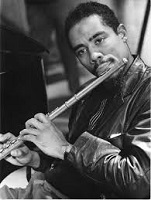
In 1960 after playing with Charles Mingus and John Coltrane, Los Angeles, Calif.-born free jazz alto saxophonist-bass clarinetist Eric Allan Dolphy Jr. (1928-64), known for making his instruments reproduce human-like and animal-like sound effects releases his first album Outward Bound, followed by album #2 Out There (1960), featuring Out There, album #3 At the Five Spot (double album) (1961), album #4 Far Cry (w/Booker Little) (1962), and album #5 Out to Lunch (1964) (his masterpiece?), featuring Hat and Beard (about Thelonious Monk), Something Sweet, Something Tender (w/Richard Davis), and Gazzelloni (named after classical flautist Severino Gazzelloni), recording 13 albums with Prestige Records in Apr. 1960-Sept. 1961 before unexpectedly dying of a diabetic coma on June 29, 1964 in Berlin, Germany after the doctors thought he was a junkie and put him in detox.
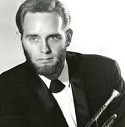

In 1960 after working with the Glen Miller band then moving to Greenwich Village, N.Y. and working for the Charlie Barnet, Maynard Ferguson, Charles Mingus, Eric Dolphy, and George Russell bands, Los Angeles, Calif.-born jazz trumpeter Donald Johnson "Don" Ellis (1934-78), a lover of unusual time signatures and the Lydian acoustic scale releases his debut album How Time Passes, featuring How Time Passes; in 1964 he goes to UCLA to study ethnomusicology with Indian-born musician Harihar Rao (1927-2013), together forming the Hindustani Jazz Sextet, opening for The Grateful Dead and Big Brother and the Holding Co. at Bill Graham's Fillmore West Auditorium on July 14, 1966, and releasing Bombay Bossa Nova; meanwhile Ellis founds the Don Ellis Orchestra, which performs in Sept. 1966 at the Monterey Jazz Festival, receiving a thunderous ovation; in 1967 after signing with Columbia Records he releases the album Electric Bath (#8 jazz), featuring Indian Lady, followed by the album Shock Treatment (1968), the album Autumn (1968), which features Variations for Trumpet, and Pussy Wiggle Stomp, which becomes their signature tune. He goes on to compose the music for the 1971 film "The French Connection" and its 1975 sequel "French Connection II"; the former features Theme from The French Connection, and Chain Reaction (by Hank Levy).
In 1960 Aram Avakian's and Bert Stern's Jazz on a Summer's Day debuts, filmed at the 1958 Newport Jazz Festival in R.I., featuring performances by Louis Armstrong, Chuck Berry, Mahalia Jackson, Anita O'Day, Anita O'Day, Dinah Washington et al.
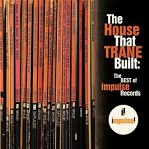
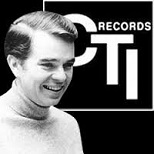
In 1960 the jazz label Impulse! Records is founded in Santa Monica, Calif. by Bedford, Va.-born Creed Taylor (1929-) as a subsidiary of ABC-Paramount Records, signing John Coltrane and becoming known as "the house that Trane built"; in 1961 Taylor leaves for Verve Records, introducing bossa nova to the U.S. via songs incl. "The Girl from Ipanema" by Stan Getz and Antonio Calos Jobim, moving to A&M Records in 1967 and forming his own jazz label CTI (Creed Taylor Inc.), which rises to the top after signing Chet Baker, George Benson, Ron Carter, Paul Desmond, Herbie Hancock, Art Farmer, Freddie Hubbard, Nina Simone, Stanley Turrentine et al.
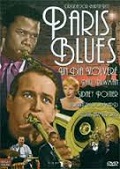
On Sept. 27, 1961 Martin Ritt's Paris Blues (United Artists) debuts, based on the 1957 novel by Harold Flender, starring Paul Newman as jazz trombonist Ram Bowen, and Sidney Poitier as jazz saxophonist Eddie Cook, who romance vacationing Am. tourists Connie Lampson (Diahann Carroll) and Lillian Corning (Joanne Woodward); features appearances by Louis Armstrong (as Wild Man Moore) and jazz pianist Aaron Bridgers.
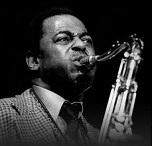
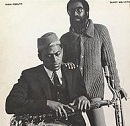
In 1962 after leaving the band of jazz pianist Cecil Taylor, Fort Lauderdale, Fla.-born jazz saxophonist Archie Shepp (1937-) releases his first solo album Archie Shepp - Bill Dixon Quartet with jazz trumpeter Bill Dixon (1925-2010), going on to evolve into socially-conscious "African American music" and blues, releasing the albums Fire Music (1965), incl. Malcolm, Malcolm Semper Malcolm (tribute to Malcolm X), The Magic of Ju-Ju (1967), incl. The Magic of Ju-Ju, Attica Blues (1972), incl. Attica Blues, and The Cry of My People, incl. The Cry of My People. In 1971 Shepp becomes a prof. of music at the U. of Mass. in Amherst, teaching courses incl. "Revolutionary Concepts in African-American Music", "Black Musicians in the Theater" et al. Meanwhile in 1964 Dixon organizes the 4-day Oct. Revolution in Jazz at the Cellar Cafe in Manhattan, N.Y., becoming the first free jazz festival, featuring Jimmy Giuffre, Andrew Hill, Sheila Jordan, Steve Lacy, Sun Ra, Cecil Taylor et al., leading to the formation of the Jazz Composers Guild and the Jazz Composer's Orchestra, which releases the album Communication (1965), and the double album The Jazz Composer's Orchestra (1968); Dixon goes on to become a prof. of music at Bennington College in Vt. in 1968-95.

In May 1963 after releasing his hard bop debut album Takin' Off for Blue Note Records in Oct. 1962, which features Watermelon Man, Chicago, Ill.-born jazz pianist Herbert Jeffrey "Herbie" Hancock (1940-) joins Miles Davis' Second Great Quintet, which incl. Ron Carter (bass), Wayne Shorter (sax), and Tony Williams (drums), with the motto "Time, no changes", where each member contributes as an equal, recording the albums E.S.P. (Jan. 20-22, 1965), The Complete Live at the Plugged Nickel (Dec. 22-23, 1965), Miles Smiles (Oct. 24-25, 1966), Sorcerer (May 16-24, 1967), Nefertiti (June 7, 22-23 and July 19, 1967), Miles in the Sky (Jan. 16, May 15-17, 1968), and Filles de Kilimanjaro (Fr. "Daughters of Kilimanjaro)") (June 19-21, Sept. 24, 1968). Hancock goes on release the albums My Point of View (album #2) (Sept. 1963), Inventions and Dimensions (album #3) (1964), which incl. Succotash, Empyrean Isles (album #4) (Nov. 1964), which features Cantaloupe Island, Maiden Voyage (album #5) (Apr. 1966), which incl. Maiden Voyage, Speak Like a Child (album #6) (June 1968), The Prisoner (album #7) (1969), Fat Albert Rotunda (album #8) (June 1970) (first for Warner Bros. Records), Mwandishi (album #9) (Mar. 1971), done in 15/8 time (Ostinato), Crossings (album #10) (May 1972), Sextant (album #11), (Mar. 30, 1973), and Head Hunters (album #12) (Oct. 26, 1973), launching jazz funk, incl. Chameleon. Album #35 Future Shock (Aug. 1983) (1M copies) features Rockit (#71 in the U.S.).

In June-July 1964 Avranches-born French jazz violinist-composer Jean-Luc Ponty (1942-) records his debut album Jazz Long Playing, showing that jazz violin can be as exciting as jazz sax. On May 25, 1970 he releases album #9 King Kong: Jean-Luc Ponty Plays the Music of Frank Zappa, joining the Mahavishnu Orchestra in 1974-5. He follows with album #12 Upon the Wings of Music (May 25, 1975), album #13 Aurora (Feb. 26, 1976), incl. Aurora, album #14 Imaginary Voyage (Nov. 4, 1976), incl. Imaginary Voyage, album #15 Cantaloupe Island (1976), album #16 Enigmatic Ocean (Sept. 1, 1977), incl. Enigmatic Ocean, and album #17 Cosmic Messenger (Aug. 10, 1978), incl. Cosmic Messenger.
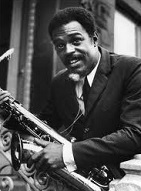
In 1964 after a stay in Sweden, Cleveland, Ohio-born avant-garde jazz saxophonist-composer Albert Ayler (1936-70) releases his debut album My Name Is Albert Ayler, stretching free jazz limits with tracks incl. Summertime (by George and Ira Gershwin and DuBose Heyward). He follows with the album #2 Spirits (Witches & Devils) (1966), which incl. Spirits, and Witches and Devils. Album #3 Prophecy, recorded on June 14, 1965 and not released until 1975 incl. Wizard. Album #4 Spiritual Unity becomes his breakthrough album, gaining him internat. attention; it incl. Ghosts (First and Second Variation). Album #5 New York Eye and Ear Control (1965) was recorded for the soundtrack of the 1964 film by Michael Snow. Too bad, on Nov. 5, 1970 after nobody understands him he jumps off the Statue of Liberty ferry into the East River and drowns: "Trane was the Father, Pharoah was the Son, I am the Holy Ghost."

In 1965 Little Rock, Ark.-born jazz tenor saxophonist Farrell "Pharoah" Sanders (1940-) releases his debut album Pharaoh's First, joining John Coltrane's final quintet and performing on the albums "Ascension" and "Meditations", absorbing the avant-garde jazz of Albert Ayler, Sun Ra, and Cecil Taylor before going solo and releasing album #2 Tauhid (1966), which features Upper Egypt and Lower Egypt, and Japan, followed by album #3 Izipho Zam (recorded on Jan. 14, 1969 and released in 1973), incl. Izipho Zam, and Prince of Peace, then signing with Impulse! Records in 1967-73 and releasing album #4 Karma (1969), which pioneers spiritual jazz, incl. The Creator Has a Master Plan, and Colors, album #5 Jewels of Thought (1960), incl. Hum-Allah-Hum-Allah-Hum-Allah, Sun in Aquarius Parts I and II, album #6 Deaf Dumb Blind (Summun Bukmun Umyun) (1970), featuring Woody Shaw on trumpet, incl. Summun, Bukmun, Umyun (from the Quran's Sura Bakara); Let Us Go into the House of the Lord, album #7 Thembi (1971), incl. Thembi, and album #8 Village of the Pharaohs (1973), incl. Village of the Pharaohs, Part 1. After leaving Impulse! Records he bounces from label to label while his radio airplay tanks.
On Apr. 7-8, 1967 the first Berkeley Jazz Festival at the UCB campus is held, featuring Miles Davis, the Modern Jazz Quartet, the Gerald Wilson Big Band, the Bill Evans Trio, Big Mama Thornton et al.
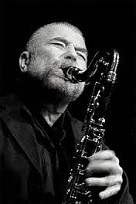
In June 1967 Remscheid, Germany-born free jazz saxophonist Peter Brotzmann (Brötzmann) (1941-) known for his rough timbre releases his debut album For Adolphe Sax, which features For Adolphe Sax, followed in May 1968 by album #2 Machine Gun, which is just the thing for politically-torn Europe; it features Machine Gun. He follows with the album Nipples (1969), which features Nipples.

On Dec. 27, 1967 low-voiced Jewish Canadian singer-songwriter (Leonard Nimoy lookalike?) Leonard Norman Cohen (1934-) releases his debut album Songs of Leonard Cohen (#83 in the U.S., #13 in the U.K.), which features the tracks Suzanne (about a 1-nighter with Suzanne Verdal, who was married to Montreal sculptor Armand Vaillancourt) ("And she shows you where to look/ Among the garbage and the flowers/ There are heroes in the seaweed/ There are children in the morning"), So Long, Marianne, Sisters of Mercy, and Hey, That's No Way to Say Goodbye. Album #2 Songs from a Room (Apr., 1969) (#63 in the U.S., #2 in the U.K.) features Bird on a Wire, and The Partisan. Album #3 Songs of Love and Hate (Mar. 1971) (#145 in the U.S., #4 in the U.K.) features Famous Blue Raincoat, Avalanche, First We Take Manhattan, and Joan of Arc. In 1976 he makes his first appearance at the Monteux Jazz Festival, with Laura Branagan in his backup band. Album #5 Death of a Ladies' Man (Nov., 1977), produced by Phil Spector shocked fans by drowning Cohen's voice in his Wall of Sound; it features Death of a Ladies' Man, Memories, and Iodine. Album #6 Recent Songs (Sept. 27, 1979) blends acoustic folk music with jazz and Oriental influences; it features The Guests, Humbled in Love, and The Gypsy's Wife. Album #7 Various Positions (Dec. 1984), a collaboration with Jennifer Warnes (whose tribute album revived his career) features Dance Me to the End of Love, Hallelujah, and Coming Back to You. Album #8 I'm Your Man (Feb. 1988) features I'm Your Man. Some of his songs are covered by Judy Collins and other admirers.
In Aug. 1969 the first annual Ann Arbor Blues and Jazz Festival in Mich. is held, featuring B.B. King.
On Aug. 6, 1971 (40th anniv. of his death) the first annual Bix Beiderbecke Memorial Jazz Festival is held in Davenport, Iowa, becoming one of the largest jazz festivals in the U.S.
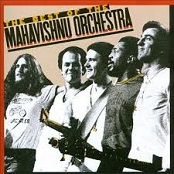
On Aug. 14, 1971 the New York city-based jazz-rock fusion group Mahavishnu Orchestra, incl. John McLaughlin (guitar), Billy Cobham (drums), Rick Laird (bass guitar), Jan Hammer (piano), and Jerry Goodman (violin) release their debut album The Inner Mounting Flame (#89 in the U.S.), incl. You Know, You Know.
On May 24, 1974 Duke Ellington (b. 1899) dies in New York City, after which the annual Chicago Jazz Festival in Grant Park is first held in his honor.
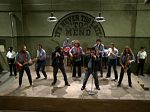
On June 20, 1980 John Landis' The Blues Brothers (Universal Pictures) debuts, starring John Belushi as Joliet Jake Blues, who gets out of Joliet Prison in Ill. and decides to put together his old blues band to save the Roman Catholic home where he and his brother Elwood Blues (Dan Aykroyd) were raised; features a ton of great blues numbers by Cab Calloway (as Curtis), James Brown (as Rev. Cleophus James), Ray Charles, and Aretha Franklin (as Mrs. Murphy); Carrie Fisher plays a mystery woman; the Blues Brothers Band incl. Steve "the Colonel" Cropper, Donald "Duck" Dunn, Murphy "Murph" Dunne, Willie "Too Big" Hall, Tom "Bones" Malone, "Blue Lou" Marini, Matt "Guitar" Murphy, and Alan "Mr. Fabulous" Rubin; does $115M box office on a $30M budget; followed by "Blues Brothers 2000" (1998); on June 18, 2010 the Vatican anoints it as a film with a true Catholic message.

In 1982 after attending Juilliard School, studying with Woody Shaw, and playing with Art Blakey and the Jazz Messengers, Sarah Vaughan, Dizzy Gillespie, Sonny Rollins, Herbie Hancock et al., New Orleans, La.-born jazz trumpeter-composer (black) Wynton Learson Marsalis (1961-), son of Ellis Marsalis Jr. (1934-), and brother of Branford Marsalis (1960-), Ellis Marsalis III (1964-), Delfeayo Marsalis (1965-), Mboya Kinyatta (1971-), and Jason Marsalis (1977-) releases his debut album Wynton Marsalis (#165 in the U.S.). In 1984 he releases album #7 Hot House Flowers (#90 in the U.S.), which incl. Stardust (by Hoagy Carmichael and Mitchell Parish). On June 9, 1985 he releases album #8 Black Codes (From the Underground), which incl. Black Codes. On Apr. 1, 1994 he records the 3.5-hour jazz oratorio Blood on the Fields, which becomes the first jazz composition to win the Pulitzer Prize for Music (1997). In 1995 Marsalis on Music debuts on PBS-TV.
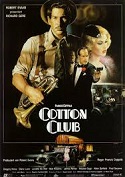
On Dec. 14, 1984 Francis Ford Coppola's The Cotton Club (Orion Pictures) debuts, starring Richard Gere as jazz musician Dixie Dwyer, who falls for Vera Cicero (Diane Lane), moll of gang boss Dutch Schultz (James Remar), while his younger brother Vincent Dwyer (Nicolas Cage) joins his mob; Gregory Hines plays dancer Delbert "Sandman" Williams; Bob Hoskins plays Cotton Club owner er, Owney Madden; flops, doing $25.9M box office on a $58M budget.

In Sept. 1986 Seattle, Wash.-born smooth jazz saxophonist Kenny G (Kenneth Bruce Gorelick) (1956-) releases album #4 Duotones, (#5 in the U.S.) (#1 jazz), becoming his breakthrough album, selling 5M copies; it incl. Songbird, Don't Make Me Wait for Love (w/Lenny Williams), What Does It Take (To Win Your Love) (w/Ellis Hall), Sade. Album #5 Silhouette (Oct 4, 1988) sells 25M copies; it incl. Silhouette. He goes on to sell 75M albums worldwide. Album #6 Kenny G Live (Nov. 21, 1989) incl. Going Home, which becomes a hit in China et al., played by stores when it's time to you know what.
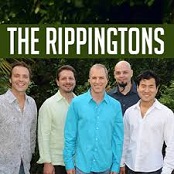
In 1986 the contemporary jazz group The Rippingtons, led by Nashville, Tenn.-born electric guitarist Russ Freeman (1960-), incl. Kenny G (sax), David Benoit (piano), Brandon Fields (sax), and Dave Koz (sax) release their debut album Moonlighting (#5 jazz) (#50 in the U.S.), incl. Moonlighting; they follow with Kilimanjaro (album #2) (1988) (#3 jazz) (#110 in the U.S.), Tourist in Paradise (album #3) (1989) (#4 jazz) (#85 in the U.S.), Welcome to the St. James' Club (1990) (album #4) (#1 jazz), Curves Ahead (album #5) (Aug. 13, 1991), and Weekend in Monaco (album #6) (Aug. 18, 1992) (#2 jazz) (#147 in the U.S.). In 1993 the lineup changes to Freeman, Dave Kochanski (keyboards), Jeff Kashiwa (sax), Kim Stone (bass), Tony Morales (drums), Steve Reid (drums). They follow with album #7 Sahara (Aug. 30, 1994) (#2 jazz), album #8 Brave New World (Feb. 27, 1996) (#4 jazz), album #9 Black Diamond (1997) (#1 jazz) (#147 in the U.S.), album #10 Topaz (May 18, 1999) (#2 jazz), album #11 Life in the Tropics (Oct. 10, 2000) (#3 jazz), and album #12 Let It Ripp (May 6, 2003).
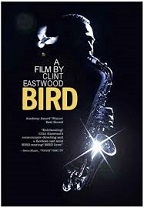
On Sept. 30, 1988 Clint Eastwood's Bird (Warner Bros.), debuts, written by Joel Oliansky and starring Forest Whitaker as Charlie "Bird" Parker, Samuel E. Wright as Dizzy Gillespie, and Diane Venora as Parker's wife Chan; does $2.2M box office on a $14.4M budget.
In 1989 the Jazz Foundation of America is founded in Manhattan, N.Y., sponsoring the Jazz Musicians' Emergency Fund and Housing Fund, and the Jazz in Schools Program.
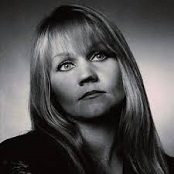
In 1992 Washington, D.C.-born jazz-blues musician Eva Marie Cassidy (1963-96) and Go-go musician Charles Louis "Chuck" Brown (1936-2012) releases her debut studio album The Other Side; it features Over the Rainbow (by Harold Arlen and E.Y. Harburg). In May 1996 she releases her live solo album Live at Blues Alley (#86 in the U.K.), recorded on Jan. 2-3, 1996; too bad, she dies of melanoma on Nov. 2, 1996; the album incl. the tracks Bridge Over Troubled Water (by Paul Simon), People Get Ready (by Curtis Mayfield), Blue Skies (by Irving Berlin), Autumn Leaves (by Johnny Mercer, Jacques Prevert, and Joseph Kosma), and Take Me to the River (Al Green, Mabon "Teenie" Hodges). On May 19, 1998 she posth. releases the compilation album Songbird, which goes #1 in the U.K. (1M copies), launching her posth. career at the top of the charts; it incl. Songbird (by Christine McVie). On June 20, 2000 she posth. releases studio album #2 Time After Time (#25 in the U.K.) (recorded Jan. 3, 1996), featuring Ain't No Sunshine (by Bill Withers). In 2002 she posth. releases studio album #3 Imagine (#1 in the U.K.) (300K copies), featuring Imagine (by John Lennon and Yoko Ono), followed by album #3 American Tune (Aug. 12, 2003) (#1 U.K.) (100K copies), Wonderful World (July 24, 2004) (#11 in the U.K.) (100K copies), featuring What a Wonderful World (by Bob Thiele and David Weiss) (#1 in the U.K.), album #4 Somewhere (Aug. 26, 2008) (#4 in the U.K.) (100K copies), Simply Eva (2011) (#4 in the U.K.) (100K copies), The Best of Eva Cassidy (2012) (#22 in the U.K.) (100K copies), Nightbird (live album) (Nov. 13, 2015) (#17 in the U.K.) (recorded Jan. 2-3, 1996), featuring Nightbird (by Stevie Nicks).
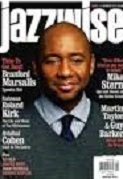
In 1997 the monthly mag. Jazzwise debuts in England, becoming the #1 English-language jazz mag. in Europe; the Sept. 2009 issue is titled The 100 Jazz Albums That Shook the World.
On Jan. 8, 2001 Ken Burns' documentary miniseries Jazz debuts on PBS-TV for 10 episodes (until Jan. 31, 2001), chronicling the history of Am. jazz.
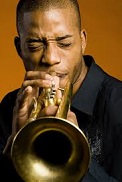
In 2002 New Orleans, La.-born jazz musician Troy "Trombone Shorty" Andrews (1986-) (grandson of R&B singer Jessie Hill) releases his debut album Trombone Shorty's Swinging' Gate. On Apr. 20, 2010 he releases album #7 Backatown (#3 jazz), featuring Backatown, followed by album #8 For True (Sept. 13, 2011) (#1 jazz) (#72 in the U.S.), featuring For True, and album #9 Say That to Say This (2013), featuring Say That to Say This. On Nov. 6, 2015 Steve Martino's 3-D computer-animated comedy The Peanuts Movie debuts, based on the Charles M. Schulz comic strip, featuring the voices of Troy "Trombone" Shorty Andrews as Miss Othmar and Mrs. Little Red-Haired Girl, Kristin Chenoweth as Snoopy's babe Fifi, Noah Schnapp as Charlie Brown, and Bill Melendez as Snoopy and Woodstock; does $246M box office on a $99M budget.

On Nov. 3, 2006 the animated series Class of 3000, created by Andre 3000 of Outkast debuts on Cartoon Network for 28 episodes (until May 25, 2008), about superstar jazz-blues music teacher Sunny Bridges (Andre 3000) and his students at Westley School of Performing Arts in Atlanta, Ga.; watch intro.

On Jan. 16, 2014 Damien Chazelle's Whiplash debuts, based on a jazz piece by Hank Levy, starring Miles Teller as jazz drummer Andrew Neiman, who attends the Shaffer Conservatory in New York City and aspires to become a jazz great under the brutal regime of teacher Terence Fletcher (J.K. Simmons); "I will gut you like a pig. You are a worthless pansy who is now weeping and slobbering over my drum set like a 9-year-old girl"; "I'd rather die drunk, broke at 34 and have people at a dinner table talk about me than live to be rich and sober at 90 and nobody remembered who I was"; "I don't think people understood what it was I was doing at Shaffer. I wasn't there to conduct. Any fucking moron can wave his arms and keep people in tempo. I was there to push people beyond what's expected of them. I believe that is an absolute necessity. Otherwise, we're depriving the world of the next Louis Armstrong. The next Charlie Parker"; "Are you a rusher, or are you a dragger, or are you gonna be on my fucking time?"; "There are no two words in the English language more harmful than good job"; "Full Metal Juilliard"; features a cool jazz drum solo; does $49M box office on a $3.3M budget.
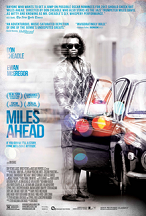
On Oct. 11, 2015 Don Cheadle's Miles Ahead (Sony Pictures) debuts, starring Cheadle in his dir. debut as jazz trumpeter Miles Davis in his silent period 1975-9; Emayatzy Corinealdi plays his first wife Frances Taylor; Ewan McGregor plays music reporter Dave Braden; does $5M box office.
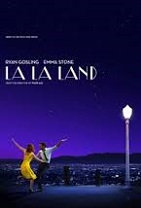
On Aug. 31, 2016 Damien Chazelle's La La Land (Summit Entertainment) debuts, a romantic jazz musical set in you know where starring Ryan Gosling as jazz pianist Sebastian Wilder, and Emma Stone as aspiring actress Mia Dolan, who hook up at Bill's (J.K. Simmons) restaurant, and end up going their separate ways; features John Legend as jazz singer Keith; does $226.5M box office on a $30M budget.